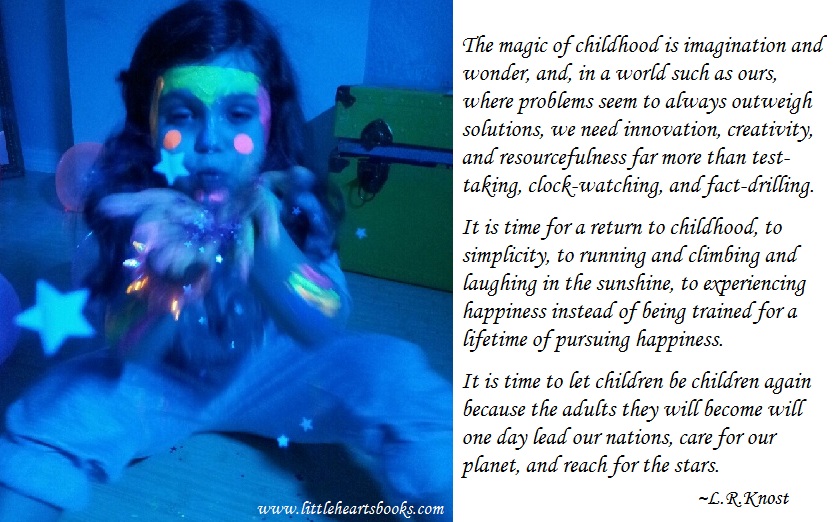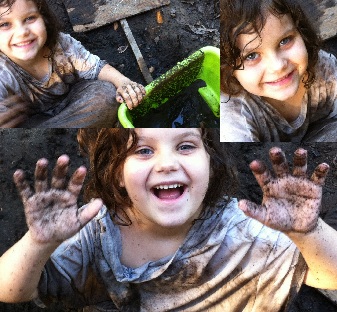The ‘NO’ Zone
[Portions reprinted from Whispers Through Time: Communication Through the Ages and Stages of Childhood by L.R.Knost. Two Thousand Kisses a Day: Gentle Parenting Through the Ages and Stages and The Gentle Parent: Positive, Practical, Effective Discipline also available on Amazon and through other major retailers.]
 The life of a small child is comprised of a daily onslaught of tempting surfaces begging for the artistry of a crayon, tall places crying out to be scaled, lovely little objects in need of a mouth or nose to visit, and dozens of other alluring glass and liquid and sharp things to be explored through the physics of gravity, the kinetics of concoctions, and the application of Newton’s Laws of Motion. There is only one force powerful enough to defeat this nearly irresistible call of adventure, imagination, and discovery…the No!
The life of a small child is comprised of a daily onslaught of tempting surfaces begging for the artistry of a crayon, tall places crying out to be scaled, lovely little objects in need of a mouth or nose to visit, and dozens of other alluring glass and liquid and sharp things to be explored through the physics of gravity, the kinetics of concoctions, and the application of Newton’s Laws of Motion. There is only one force powerful enough to defeat this nearly irresistible call of adventure, imagination, and discovery…the No!
Every child knows the power of the No to circumvent the most well-laid plans. Even tiny babies just weeks into the world are introduced to its power when they grasp a fistful of hair while nursing or reach for some lovely, squishy stuff while getting a diaper change. That itty bitty two-letter word is packed with a force beyond comprehension to a toddler, and when they finally figure out how to wrap their little lips around those letters and form the word “NO!” themselves, the possibilities seem limitless!
Do you want a cookie? “No!”…Well, actually, yes, but how cool is it that when I said “No!” I controlled whether or not someone gave me a cookie!
Do you want Daddy to hold you? “No!” Well, yes, but I got to decide whether someone held me or not for a change!
Do you want to play outside? “No!” Actually, I do, but do I really get to decide for myself where I go? Cool!
That kind of power and control can go to a little person’s head, for sure! And the change in the big people when the word is used against them clearly demonstrates its incredible value. Their faces go from happy to serious or even angry, and sometimes a little person can even make a big person yell. What dazzling power!
And then when little ones manage a few more words in their vocabulary, they can add direct quotes from the most powerful beings they know ~ mommy and daddy. Quotes like, “I said ‘No’!” and “Don’t you tell me ‘No’!” and “No means ‘No’!”
The authority! The dominion! The clout! And using them against those powerful beings, watching them turn red in the face and yell and threaten…well, it’s a little scary and makes a small person feel really disconnected and upset…but the surge of intense pleasure at feeling powerful and in control almost makes them feel like a big person for a moment!
And that’s what they most long to be, just like mommy and daddy ~ big and strong and smart and powerful.
So what’s a mommy or daddy to do when confronted with the No from their little power-mongers? First, take a deep breath, and then engage those adult brains.
What inherent power is there, really, in a little two-letter word? Only the power we give it! What if, instead of that tiny word being able to push our buttons, we just disconnected the buttons entirely and didn’t react to the No at all? It would simply become a no, just another word to celebrate our precious little people adding to their fledgling vocabularies.
What if we backed up even further and disenfranchised the No from the beginning? When our newborn baby’s flailing hands caught a tiny fistful of hair, what if we just smiled and gently removed it and kissed those itty bitty little fingers?
When our intrepid little explorers discovered the wonders of kitchen cabinets, what if we used cabinet locks but left one or two full of pots and pans and plastic bins for them to discover?
What if when our little people headed for the walls to do their best Michelangelo interpretation on them, we simply intercepted them and offered alternative canvases?
Or what if when they ascended the kitchen cabinets, we just scooped them up and headed outdoors for some climbing adventures?
The thing is, the No is only the No when we, the adults, make it the No. And it can become simply a no when we get creative and interactive and stop using a tiny two-letter word like it has “Phenomenal Cosmic Power in an itty-bitty living space!” (Aladdin 1994)
Related posts:
When Children Act Out ~ Reflecting Our Emotions
7-Year-Old Gentle Parenting Crusader
Changing the World, One Little Heart at a Time
Practical, Gentle, Effective Discipline
 Award-winnning author, L.R.Knost, is the founder and director of the children's rights advocacy and family consulting group, Little Hearts/Gentle Parenting Resources, and Editor-in-Chief of Holistic Parenting Magazine. Books by L.R.Knost include Whispers Through Time: Communication Through the Ages and Stages of Childhood ; Two Thousand Kisses a Day: Gentle Parenting Through the Ages and Stages ; The Gentle Parent: Positive, Practical, Effective Discipline ; and Jesus, the Gentle Parent: Gentle Christian Parenting the first four books in the Little Hearts Handbook gentle parenting series, and children’s picture books Petey’s Listening Ears and the soon-to-be-released Grumpykins series.
Award-winnning author, L.R.Knost, is the founder and director of the children's rights advocacy and family consulting group, Little Hearts/Gentle Parenting Resources, and Editor-in-Chief of Holistic Parenting Magazine. Books by L.R.Knost include Whispers Through Time: Communication Through the Ages and Stages of Childhood ; Two Thousand Kisses a Day: Gentle Parenting Through the Ages and Stages ; The Gentle Parent: Positive, Practical, Effective Discipline ; and Jesus, the Gentle Parent: Gentle Christian Parenting the first four books in the Little Hearts Handbook gentle parenting series, and children’s picture books Petey’s Listening Ears and the soon-to-be-released Grumpykins series.
Whispers Through Time ~ Book Reviews, Author Interviews & Book Trailer
My first book trailer! This was sooooo fun. My children had a blast making it! My toddler decided she was going to join me during my segment, lol, so you’ll see me chatting with her a few times. Nothing wrong with a glimpse of real life, though, right? So, without further ado, here is the official book trailer for Whispers Through Time: Communication Through the Ages and Stages of Childhood. Enjoy!
I’m so honored to have these incredible voices for children reviewing Whispers Through Time: Communication Through the Ages and Stages of Childhood:
Sweet, Funny, Insightful: Whispers Through Time by L.R. Knost is destined to be a dog-eared favorite, passed down from generation to generation. As long as there are children being born into this world and toddlers having tantrums and teens racing toward adulthood at an alarming pace, there will be parents who will turn to this book for guidance. Why? Not because L.R. Knost has all the answers, but because she shows parents how to find their own answers for their own children and their own families. This guidebook challenges conventional thinking with a wisdom born of experience and a healthy dose of research to back it up. Written with the same unique blend of sweetness and humor, grit and honesty, reassurance and insight that made her first book, Two Thousand Kisses a Day, a best-seller, Whispers Through Time is sure to become a runaway hit in its own right. An absolute must-have for any home library. Highly recommended!
Dr. Laura Markham of AhaParenting Audio interview with the author
The Natural Parent Magazine Book trailer and summary
Kidlutions: Solutions for Kids Book review and contest
Parenting Beyond Punishment Book review and giveaway
The Path Less Taken Book review
Mommy Perks Book trailer and review
The Hippie Housewife Book review and giveaway
Diary of a Natural Mom Book review and giveaway
The Mahogany Way Book review and giveaway
Parenting with Understanding Book review and giveaway
Dr. Lynne Kenney: The Family Coach Book Trailer and review
Nurture Parenting Magazine Book trailer and giveaway
Table of Contents:
Chapter 1 ‘Communication: Whispers Through Time’ explores the importance of communication and connection in parent/child relationships.
Chapter 2 ‘Baby Talk’ celebrates those first moments and days and weeks of communication between newborns and parents.
Chapter 3 ‘Becoming Mommy’ shares the beauty of embracing parenthood.
Chapter 4 ‘Baby Signing: A Gentle Introduction to Communication’ introduces the concept of using baby signs to communicate.
Chapter 5 ‘The Power of Perception’ explores the connection between a parent’s perception of their child’s motives and the parent’s response.
Chapter 6 ‘Eleven Tips to Beat the Mama Blues’ shares eleven ways to work through those sometimes hard, sometimes humdrum days of parenthood.
Chapter 7 ‘The Taming of the Tantrum: A Toddler’s Perspective’ explores life from the perspective of a toddler and offers guidance on how to use communication to reduce or eliminate tantrums.
Chapter 8 ‘The NO Zone’ shares ideas for how to respond when a toddler discovers how to use the word, “NO!”
Chapter 9 ‘The Secret of the Whisper’ offers a unique response to little people’s sometimes big emotions.
Chapter 10 ‘Ten Ways to Play When Play is the Last Thing on your Mind’ shares ten ideas for weaving play into an ordinary day
Chapter 11 ‘A Listening Heart’ breaks down the concept of listening and offers ideas for how to pinpoint the issue if listening is a problem.
Chapter 12 ‘A Child’s Heart’ shares a glimpse of the power of communication and connection.
Chapter 13 ‘Why Whining is a Win’ offers a unique perspective on that age-old annoying behavior…whining.
Chapter 14 ‘Can We Talk?’ explores adults’ use of figurative language and the confusion that can result for children.
Chapter 15 ‘Age of Reason: Why, oh Why, Do They Always Ask Why?’ examines why the why stage is so important.
Chapter 16 ‘Five Gentle Tools for Handling Lying’ shares a practical and gentle approach to lying.
Chapter 17 ‘Rethinking Tattling’ explores the importance of listening to tattling.
Chapter 18 ‘The Artist in the Child’ celebrates the differences in children through the unique perspective of the artist.
Chapter 19 ‘Whisper Words of Wisdom’ examines the unseen wounds that thoughtless words can inflict.
Chapter 20 ‘Love Means Sometimes Having to Say You’re Sorry’ shares the importance of making things right when you’ve done something wrong.
Chapter 21 ‘The sWord and the sTone’ covers the importance of living what you want your child to learn.
Chapter 22 ‘Chatterboxes and Dreamers: Is Your Child an Introvert or an Extrovert?’ discusses the different parenting approaches to different personalities.
Chapter 23 ‘I is for `I dunno’ and That’s Good Enough for Me’ shares some insights into the mysteries of the adolescent mind.
Chapter 24 ‘Backtalk is Communication: LISTEN!’ tackles the startling truth that when children talk back they are actually communicating.
Chapter 25 ‘My Huckleberry Friend’ shares the reasons that a parent should not only be their child’s friend, they should be their best friend.
Chapter 26 ‘Whispering Winds of Change’ explores the process of letting them go while still holding them close.
Chapter 27 ‘Messages in a Bottle: Our Hope for the Future’ shares thirty-two messages to write on the hearts and minds of your children before sending them out into the world.
Appendix A ‘Tips for Talking to Teens’
Appendix B ’12 Steps to Gentle Parenting’
Sample chapters:
Backtalk is Communication…LISTEN
The Taming of the Tantrum: A Toddler’s Perspective
10 Ways to Play when Play is the Last Thing on Your Mind
If you’d like to know more about Two Thousand Kisses a Day: Gentle Parenting Through the Ages and Stages or Whispers Through Time: Communication Through the Ages and Stages of Childhood, click the links to read more editorial and reader reviews.
Note: For those outside the US who would like to purchase books by L.R.Knost without Amazon’s high international shipping costs, a limited supply is available directly from the author here.
 Award-winnning author, L.R.Knost, is the founder and director of the children's rights advocacy and family consulting group, Little Hearts/Gentle Parenting Resources, and Editor-in-Chief of Holistic Parenting Magazine. Books by L.R.Knost include Whispers Through Time: Communication Through the Ages and Stages of Childhood ; Two Thousand Kisses a Day: Gentle Parenting Through the Ages and Stages ; The Gentle Parent: Positive, Practical, Effective Discipline ; and Jesus, the Gentle Parent: Gentle Christian Parenting the first four books in the Little Hearts Handbook gentle parenting series, and children’s picture books Petey’s Listening Ears and the soon-to-be-released Grumpykins series.
Award-winnning author, L.R.Knost, is the founder and director of the children's rights advocacy and family consulting group, Little Hearts/Gentle Parenting Resources, and Editor-in-Chief of Holistic Parenting Magazine. Books by L.R.Knost include Whispers Through Time: Communication Through the Ages and Stages of Childhood ; Two Thousand Kisses a Day: Gentle Parenting Through the Ages and Stages ; The Gentle Parent: Positive, Practical, Effective Discipline ; and Jesus, the Gentle Parent: Gentle Christian Parenting the first four books in the Little Hearts Handbook gentle parenting series, and children’s picture books Petey’s Listening Ears and the soon-to-be-released Grumpykins series.
When Children Act Out ~ Reflecting Our Emotions
[Excerpt from The Gentle Parent: Positive, Practical, Effective Discipline by L.R.Knost. Whispers Through Time: Communication Through the Ages and Stages of Childhood, Two Thousand Kisses a Day: Gentle Parenting Through the Ages and Stages, and Jesus, the Gentle Parent: Gentle Christian Parenting also available on Amazon and through other major retailers.]
~~~~~~~~~~~~~~~~~~~~~
Your sweet little four-year-old has suddenly started throwing his food at the table every. single. night. You’ve tried giving him smaller portions of food, letting him help plan the meals, letting him help cook the meals. You’ve tried asking him to stop, demanding that he stop, pleading with him to stop. You’ve tried rewards, sticker charts, and offering desserts. You’ve put him in time-out, yelled at him, even threatened to spank him, which you’ve never, ever done before. But still he throws food at the table.
Then it happens. You’re sitting down for dinner and ask your spouse how the job hunt went that day. A little motion catches your eye and you glance at your four-year-old just in time to see a meatball fly across the table from a small, sauce-covered hand. But something else catches your attention, too, and instead of focusing on the flying meatball, this time you focus on your child.
In the split second before your little guy launched his food volley, you’d seen the fear, almost panic, in his eyes. Your mind races. Why, if he was so afraid of being spanked, would he go right ahead and throw his food? What in the world would make him do the very thing that might bring about the terrible consequence he seemed to be in a panic over?
You hear a deep sigh from your other side. Your spouse seems to be trying to control his urge to retaliate against the little food-fighter across the table from him. Teeth gritted tightly, he grabs a napkin, scoops up the meatball next to his plate, and resumes the conversation.
“Nothing. No one’s hiring. I don’t know what we’re going to do.”
Before you get a chance to respond, a meatball whizzes past your ear and lands smack in the middle of your husband’s plate, splashing marinara sauce all over his shirt. He comes out of his seat with a roar and glares at the little guy who is glaring right back at him, now seemingly unafraid, almost taunting his father to make the next move.
But this time your husband sees something different. He sees the little quivering chin and the small clenched hands and realizes something else is going on. Quietly, he rounds the table and scoops his little fighter into a tight hug, irrespective of the marinara now coating both of their shirts. He doesn’t say a word, just sinks into the chair with his son wrapped in his arms and holds him close against his heart.
As you see your angry, defiant son suddenly melt into his father and bury his face in his daddy’s neck with body-wracking sobs, your own anger melts away. Soon, a small, tear-stained face peeks out and your heart breaks when your son looks back and forth between you and your husband, and his little voice croaks out, “What are we gonna do? Where will we live? Are we gonna starve?” before dissolving in sobs against his daddy’s chest again.
That’s when you realize dinner conversations have revolved around your husband’s job loss and job search for months. Conversations from the past weeks run through your head, and you remember discussing getting a job outside the home to supplement the income from your own home-based business and putting your son into daycare. You remember your husband talking about selling your house, about where you would move, about saving on groceries and other bills. You cringe as you recall mentioning a friend who lost everything, including his home and marriage, when he lost his job.
What had your little preschooler been thinking all this time? What terror must he have felt imagining losing his home, not having enough food to eat, and even his mommy and daddy divorcing? The panic you’d seen in his eyes suddenly made all-too-much sense. He had no way of articulating his fears, the fears he’d felt and heard from you and your husband, but that neither of you had thought to discuss directly with him so that you could offer reassurance and comfort and answer his questions.
You’re so, so thankful that you hadn’t gone as far as actually hitting your son for the first time ever in an attempt to control him, and you vow to yourself that you will never threaten or try to coerce or manipulate your child again, just as you wouldn’t your husband. You commit to finding better ways to communicate with your son, to remain in-tune with him, to focus on the need behind the behavior instead of just trying to control the behavior, to connect with him, and to equip him with better ways of communicating his needs.
As your husband looks up, his eyes wet with tears and his little man still clasped close to his heart, you meet his gaze and see the same realization, the same commitment, the same resolve. Life will still throw you curveballs, but from here on out you’ll handle them together, all together.
Not every action by our children is a sign of trauma or deep, unresolved issues. But every behavior is communication. Behaviors can communicate simple needs such as hunger or the need for sleep. They can communicate unmet needs such as the need to be heard or the need to reconnect. They can communicate stress or discomfort over changes in routine or sickness. Or they can communicate big emotions our children need help processing.
But they can also be a reflection of and a reaction to our big emotions, our illnesses, our unmet needs, our stresses and anxieties, our emotional baggage. Just as children learn best by imitation, making it important to always be aware of the examples we set, their tendency to tune-in to our emotions and upsets makes it vital for us to stay in-tune with them so that we can alleviate their anxieties and answer their questions and ease their fears.
It’s important to be open with them in age-appropriate language about ongoing family issues or health problems or other stresses, but remember that children are not equipped to handle adult stresses and emotions, so be careful to avoid dumping your emotional baggage on them. If you’ve got traumas from your past or are dealing with any kind of emotional or mental instability, you need to work through those issues on your own or seek help so that they don’t negatively impact our relationship with our children.
Simply reacting to our children’s behavior rather than responding to the need motivating the behavior not only leaves us in the dark as to what our children are thinking and feeling, but also misses an opportunity to address the root of the behavior. When we pause, breathe through our own visceral reactions, and focus on our child instead of our child’s actions, we can better discern the need behind the behavior and meet that need, thus eliminating the behavior itself with no need for correction and opening the door to guiding our children to better ways of expressing themselves in the future. The end result is not only the resolution of the present issue, but also strengthening of the parent/child relationship and giving our children the reassurance that they aren’t alone in dealing with their stresses and questions and fears and can always come to us, their ‘safe haven’ in times of need.
If you’ve been parenting from a place of emotional neediness or stress, working through your own emotional baggage to a place of peace will help you to bring that peace into your parent/child relationship. It can be very difficult to step out of a reactionary cycle with your children, though. One pitfall many parents face when trying to move away from a punishment-based or reactionary parenting style is going too far in the opposite direction and failing to set firm, reasonable limits. Children need boundaries to feel safe and in control. If you’re having trouble balancing the desire to parent gently and peacefully with the need to guide our children to stay within reasonable boundaries, here are some tools that may help:
Practical, Gentle, Effective Discipline
*Also published in The Natural Parent Magazine
Related posts:
Stealing God’s Gift: Free Will is a Gift to be Nurtured, Not a Curse to be Broken
Spare the Rod: The Heart of the Matter
Jesus, the Gentle Parent: Gentle Christian Parenting
Tattered Tapestries: Weaving Trust Through the Chaos
Fear Doesn’t Lead to Faith: Becoming Your Child’s Safe Place
Where Did You Learn Love, Child?
 Award-winnning author, L.R.Knost, is the founder and director of the children's rights advocacy and family consulting group, Little Hearts/Gentle Parenting Resources, and Editor-in-Chief of Holistic Parenting Magazine. Books by L.R.Knost include Whispers Through Time: Communication Through the Ages and Stages of Childhood ; Two Thousand Kisses a Day: Gentle Parenting Through the Ages and Stages ; The Gentle Parent: Positive, Practical, Effective Discipline ; and Jesus, the Gentle Parent: Gentle Christian Parenting the first four books in the Little Hearts Handbook gentle parenting series, and children’s picture books Petey’s Listening Ears and the soon-to-be-released Grumpykins series.
Award-winnning author, L.R.Knost, is the founder and director of the children's rights advocacy and family consulting group, Little Hearts/Gentle Parenting Resources, and Editor-in-Chief of Holistic Parenting Magazine. Books by L.R.Knost include Whispers Through Time: Communication Through the Ages and Stages of Childhood ; Two Thousand Kisses a Day: Gentle Parenting Through the Ages and Stages ; The Gentle Parent: Positive, Practical, Effective Discipline ; and Jesus, the Gentle Parent: Gentle Christian Parenting the first four books in the Little Hearts Handbook gentle parenting series, and children’s picture books Petey’s Listening Ears and the soon-to-be-released Grumpykins series.
10 Ways to Play with Your Children when Play is the Last Thing on Your Mind
[Portions reprinted from Whispers Through Time: Communication Through the Ages and Stages of Childhood by L.R.Knost. Two Thousand Kisses a Day: Gentle Parenting Through the Ages and Stages and The Gentle Parent: Positive, Practical, Effective Discipline also available on Amazon and through other major retailers.]
 Let’s be honest. Parents are adults, and not every adult is comfortable sitting on the floor playing with stuffed animals for hours at a time. We don’t always eagerly jump in puddles or make mudpies. We often have heavy things weighing on us…health issues, financial strains, layoffs threatening, marital conflict…and playing is simply the very last thing on our minds.
Let’s be honest. Parents are adults, and not every adult is comfortable sitting on the floor playing with stuffed animals for hours at a time. We don’t always eagerly jump in puddles or make mudpies. We often have heavy things weighing on us…health issues, financial strains, layoffs threatening, marital conflict…and playing is simply the very last thing on our minds.
But the reality that play is the language of childhood and that our children need us to connect with them on their terms is on our minds. The truth that childhood is such a brief season of life and if we blink too long we’ll miss this precious time with our children just adds to the weight we carry, making playing with them seem like just another burden, another demand on our already stretched-too-thin time, attention, and patience.
The thing is, though, that our children do need us to connect with them in play. It’s in the simplicity of play that children sort through the complexity of life and, like puzzle pieces, put it all together to make sense of the world. Play is how they process the overwhelming task of acclimating to a big, strange, sometimes scary world, and they need to feel securely connected to us and in close communication with us as they find their way. Play provides that connection and builds those oh-so-important channels of communication that are essential in a healthy parent/child relationship.
That, of course, leaves us in the dichotomous position of our needs versus our children’s needs which in and of itself is not conducive to a healthy relationship. So what’s a busy, overburdened, stressed parent to do?
Enter, the playful parent who weaves humor into the humdrum, tummy tickling into the routine, dancing into the dreary, and silly songs into the mundane. Here are ten ways to weave playful parenting into the ordinary moments of everyday life:
- When your baby is an infant, babywearing is the secret to playful connection and communication building. Wearing your baby close to your heart, singing and swaying and placing soft kisses on a tiny head while doing dishes and sweeping the floors and taking the dog for walks is a lovely, low-stress way to weave playfulness into your day.
- When your baby is a bit older, continue wearing him as long as you both are comfortable with it because riding high on your hip or back lets him see the world from your vantage point and offers everyday moments to play with bubbles in the sink as you wash dishes, to dance through the house as you put away laundry, and to giggle together as you grocery shop.
- Daily routines offer awesome opportunities to play as you ‘tickle’ your little one’s teeth instead of brush them, ‘capture’ wild shoes that try to escape when you’re leaving the house, and ‘wrestle’ with your little pajama monster before bed.
- Wrangling a reluctant child into the carseat is often a dreaded daily task. Try making a game out of it by tickling a little tummy while you buckle up straps or blowing some bubbles to distract your little one or making up a silly buckle-up song to ease the transition.
- While driving, turn off the radio and make up silly stories or songs or simply talk about where you’re going or what you see as you drive.
- Reading to your little one from birth onward is the single best way to raise a reader. Try making it more interactive by acting out the story or using different voices to read or letting your child guess what’s going to happen on each page before you read it.
- Getting out the door in the morning can be a challenge. Turn it into a real challenge by having hopping contests to the car. Let your little one win and give tickle-kisses as their prize!
- Bathtime is a great time for fun. Set sail to distant shores with your little pirate and search for hidden treasure or go on a safari and find jungle animals floating in piles of bubbles or go spelunking and make cave drawings on the sides of the tub with bath crayons.
- As your children get older their need for playful connection and communication is still strong. Play word games in the car. Turn math homework into playtime by using manipulatives to help them work things out. Cook together while singing pop tunes. Arm wrestle at the dinner table. Have a quick pillow fight in the morning to put everyone’s grumpies to sleep.
- Chores are a real chore. Try turning them into a game, instead! Get out a board game with dice and every time someone rolls they not only move their game piece, but pick up the same number of toys and put them away and then race back in time for their next turn.
The central idea here is to intentionally weave fun and play and connectedness and communication into your everyday moments to turn ordinary days into extraordinary memories that will last a lifetime!
Related posts:
Practical, Gentle, Effective Discipline
200 Ways to Bless Your Children with a Happy Childhood
11 Tips to Beat the Weary Dreary Mama Blues
12 Tips for Gently Parenting Your Adult Children (Hint: It starts when they’re newborns!)
Tots to Teens~Communication Through the Ages and Stages
The Bookshelf: To Read or Not To Read
 Award-winnning author, L.R.Knost, is the founder and director of the children's rights advocacy and family consulting group, Little Hearts/Gentle Parenting Resources, and Editor-in-Chief of Holistic Parenting Magazine. Books by L.R.Knost include Whispers Through Time: Communication Through the Ages and Stages of Childhood ; Two Thousand Kisses a Day: Gentle Parenting Through the Ages and Stages ; The Gentle Parent: Positive, Practical, Effective Discipline ; and Jesus, the Gentle Parent: Gentle Christian Parenting the first four books in the Little Hearts Handbook gentle parenting series, and children’s picture books Petey’s Listening Ears and the soon-to-be-released Grumpykins series.
Award-winnning author, L.R.Knost, is the founder and director of the children's rights advocacy and family consulting group, Little Hearts/Gentle Parenting Resources, and Editor-in-Chief of Holistic Parenting Magazine. Books by L.R.Knost include Whispers Through Time: Communication Through the Ages and Stages of Childhood ; Two Thousand Kisses a Day: Gentle Parenting Through the Ages and Stages ; The Gentle Parent: Positive, Practical, Effective Discipline ; and Jesus, the Gentle Parent: Gentle Christian Parenting the first four books in the Little Hearts Handbook gentle parenting series, and children’s picture books Petey’s Listening Ears and the soon-to-be-released Grumpykins series.
The Taming of the Tantrum: A Toddler’s Perspective
 [From Whispers Through Time: Communication Through the Ages and Stages of Childhood by L.R.Knost. Two Thousand Kisses a Day: Gentle Parenting Through the Ages and Stages and The Gentle Parent: Positive, Practical, Effective Discipline also available on Amazon and through other major retailers.]
[From Whispers Through Time: Communication Through the Ages and Stages of Childhood by L.R.Knost. Two Thousand Kisses a Day: Gentle Parenting Through the Ages and Stages and The Gentle Parent: Positive, Practical, Effective Discipline also available on Amazon and through other major retailers.]
So parents, here’s the scoop on tantrums:
They’re your fault.
Okay, okay, so maybe my toddlerhood contributes to them a teensy-weensy bit, but seriously…
You with the obsession with brushing teeth and bedtimes and matching clothes, enough already! Does it ever even occur to you that there’s another person (Yes, I am an actual separate person from you. Remember that whole cutting of the umbilical cord thing?) who might have an opinion about what goes in my mouth or when I’m tired or not or what I want to wear?
And you, the one who thinks carrots and kale are food. Really? You have all kinds of opinions about what tastes good and what doesn’t, but I’m not allowed to have any?
And don’t even get me started on the rush-rush, hurry-up craziness that has me being snatched up in the middle of my most fantastic block tower ever and strapped into a torture device (Btw, where’s your carseat?!?) and dragged from one place to another right through snack time. I can’t have an agenda? Don’t my interests mean anything?
Okay, so maybe I don’t know everything yet, but how am I going to learn if you just force these issues instead of communicating with me about things? That whole learning by osmosis thing (a.k.a. passive learning) didn’t work for you in college, and it won’t work with me, either.
You keep going on and on and ooooon about wanting me to listen. “Why won’t you listen?” “If you’d listen for once!” “Would you just listen to me?!?” I’ve got three words for you…
Two. Way. Street.
Maybe instead of that whole failed learning by osmosis experiment you keep trying (You do know the definition of insanity is doing the same thing over and over again expecting a different result, right? Okay, okay, just checking!) you could read the research and find out that I learn by active engagement (two-way conversation!) and imitation. Yep, that’s right. I learn from what you do, not just what you say.
So here’s the deal…
Want me to learn to listen? Then listen to me. Listen and respond to my cries when I’m a baby. Listen and reply to my babbling attempts at talking when I’m a toddler. Listen to my whining and respond patiently when I’m a preschooler. (I know it’s annoying, but whining is my last step, kind of like your ‘last nerve’ you complain I’m stomping on, before I have a meltdown. It’s my last-ditch effort to hold on to the tiny bit of self-control I’ve learned so far in my short life!) Listen and actually pay attention (a.k.a eye contact!) to my endless stories about snails when I’m in middle childhood and to my endless complaints and dramas when I’m in my teen years.
Want me to learn respect? Then show me respect. Show me that you respect my personal space by explaining the things you’re doing to me like changing my diaper or strapping me into a carseat. Show me that you respect others by not talking about them behind their backs (Yes, I can and do hear you!) or yelling at them on the road. Show me that you respect my opinions by asking for them and accommodating them when you can. (I know you won’t always be able to, but the times you do will help me to accept the times you can’t.)
Want me to learn compassion? Then show me compassion. Respond kindly and gently when I’m upset or angry or just out-of-sorts. Stay close when my emotions overwhelm me and I have a meltdown moment. (I need your presence and compassion the most when I seem to deserve it or even want it the least!) And model compassion by treating others kindly in front of me.
Want me to learn self-control? (This is a big one!) Then show me self-control. Take a parental time-out when you get tired or overwhelmed or angry so I learn how to handle those big emotions. Count to ten and take some deep breaths instead of yelling or hitting. And pace yourself in this big world. I need to learn that it’s okay to take care of myself and not feel like I have to fill every moment with plans and schedules and agendas. I’ll learn that from watching you choose wisely from the many opportunities and pressures life will offer.
Okay, so to wrap this up. My tantrums don’t just come out of nowhere. They are the result of tiredness, hunger, frustration, anger, etc. You can prevent them, or at least minimize them, by keeping me fed and rested, by paying attention to my preferences, interests, and attempts to communicate, and by communicating kindly and patiently with me about upcoming changes or things I might not like. And keep in mind, I’m always watching and absorbing everything that goes on around me, so make sure you’re living what you want me to learn!
Related posts:
Practical, Gentle, Effective Discipline
When Things Get Physical: Hitting, Throwing, Kicking, and Biting
Testing the Boundaries~What’s a Parent to Do?
Toddlers, Tantrums, and Time-In’s, Oh My!
Parenting a Strong-Willed Child
Spare the Rod: The Heart of the Matter
Easy Peasy DIY Parenting Tools
To a Toddler Sharing is a 4 Letter Word~MINE!
 Award-winnning author, L.R.Knost, is the founder and director of the children's rights advocacy and family consulting group, Little Hearts/Gentle Parenting Resources, and Editor-in-Chief of Holistic Parenting Magazine. Books by L.R.Knost include Whispers Through Time: Communication Through the Ages and Stages of Childhood ; Two Thousand Kisses a Day: Gentle Parenting Through the Ages and Stages ; The Gentle Parent: Positive, Practical, Effective Discipline ; and Jesus, the Gentle Parent: Gentle Christian Parenting the first four books in the Little Hearts Handbook gentle parenting series, and children’s picture books Petey’s Listening Ears and the soon-to-be-released Grumpykins series.
Award-winnning author, L.R.Knost, is the founder and director of the children's rights advocacy and family consulting group, Little Hearts/Gentle Parenting Resources, and Editor-in-Chief of Holistic Parenting Magazine. Books by L.R.Knost include Whispers Through Time: Communication Through the Ages and Stages of Childhood ; Two Thousand Kisses a Day: Gentle Parenting Through the Ages and Stages ; The Gentle Parent: Positive, Practical, Effective Discipline ; and Jesus, the Gentle Parent: Gentle Christian Parenting the first four books in the Little Hearts Handbook gentle parenting series, and children’s picture books Petey’s Listening Ears and the soon-to-be-released Grumpykins series.
Helping Unique Learners Find Their Genius
[From Raising Bookworms: Life, Learning, and Literacy by L.R.Knost available 2014; Two Thousand Kisses a Day: Gentle Parenting Through the Ages and Stages, Whispers Through Time: Communication Through the Ages and Stages of Childhood, and The Gentle Parent: Positive, Practical, Effective Discipline now available on Amazon and through other major retailers.]
 Homeschooling a unique learner can be challenging simply because they don’t get the benefit of access to testing and professional support without a lot of initiative, research, phone calls, and door-knocking on your part. But the trade-off is the freedom to tailor your teaching and learning environment to your child’s needs, and that is of incredible value when educating a unique learner.
Homeschooling a unique learner can be challenging simply because they don’t get the benefit of access to testing and professional support without a lot of initiative, research, phone calls, and door-knocking on your part. But the trade-off is the freedom to tailor your teaching and learning environment to your child’s needs, and that is of incredible value when educating a unique learner.
Albert Einstein said, “Everybody is a genius. But if you judge a fish on its ability to climb a tree, it will live its whole life believing that it is stupid.” Unique learners have beautiful minds just waiting to find their genius. We just need to look outside of the box to help them find it!
Here are some of the tips, tools, and techniques I’ve learned through years of homeschooling my unique learners to help them work through the challenges they face on a daily basis:
1.) Lighten up…Everything in life is easier if you take it with a grain of salt and learn to laugh. Our unique learners will have more struggles and challenges than the average person throughout life, not just during their school years. That is an unavoidable fact. But who wants to be ‘average’ anyway? Help them to celebrate their uniqueness and embrace the future with grace and humor by sharing your own struggles, modeling coping techniques, and being able to laugh at your own mistakes. Make ‘even missteps are valuable steps on the road to success’ your homeschool motto!
2.) Play…Children learn best through play, and that applies to therapy, as well. Experience is the only true path to learning, so let their imaginations soar as they do the hard work of learning to cope with their unique challenges. (See some play-based, brain-enriching, and eye-tracking activities below)
3.) Jazz it up…Music truly is medicine for the soul. Buy a good set of headphones (not earbuds) and play classic instrumentals softly while your unique learner is trying to concentrate, whether it be on reading or writing or drawing, etc. Filtering out the cacophony of life and soothing their stress levels with the gentle strains of Mozart are only some of the benefits of music. Another benefit is that the rhythms, cadence, and timing of music actually have an organizing effect on the brain!
4.) Exercise…Invest in an exercise bicycle (We got ours for $15 from a yard sale!) that lets your unique learner sit in a comfortable seat while pedaling. The cross-over action of pedaling also has an organizing effect on the brain, and, if used while reading or playing video games (Video games can be great exercises for eye-tracking if you choose the right ones!) can actually increase the speed and effectiveness of learning.
unique learner sit in a comfortable seat while pedaling. The cross-over action of pedaling also has an organizing effect on the brain, and, if used while reading or playing video games (Video games can be great exercises for eye-tracking if you choose the right ones!) can actually increase the speed and effectiveness of learning.
5.) Get crunchy…Believe it or not, another ‘brain organizing’ activity is chewing, particularly crunchy foods, while reading, etc. Some good choices are pretzels, carrot sticks, celery, granola, and nuts. (If you’ve got a sensory sweetie like I do, be careful to let them choose something that won’t send their senses into overdrive.) Sugarless chewing gum can be substituted when you go places where foods aren’t appropriate, but still would like to offer your child a calming, organizing aid.
6.) Listen, listen, listen…Your unique learner will have more than their share of stress and possibly a harder time articulating it than others might. Slow down and really focus on what they are communicating. Listen ‘between the lines’ to their heart, their hurts, their fears, their needs. Be their safe place, their source of comfort and renewal.
7.) Hug it out…Physical closeness is healing, and so make sure that along with the extra struggles and challenges your unique learner faces, they get lots of extra cuddles, snuggles, and hugs. When they get older, a gentle touch on their shoulder or a light hand on their arm will be instantly calming and comforting because it will tap into those feelings of comfort and closeness from earlier childhood.
8.) Watch and learn…Just as every child is different, every child with challenges is unique in how they manifest those challenges and how they handle them. Paying careful attention to your own unique learner’s personality, struggles, aversions, triggers, etc. will give you clues as to how to help them learn to cope. With SPD (Sensory Processing Disorder), for example, avoiding unpleasant stimulus and providing needed stimulus is the name of the game. Typically, you’ll want to provide a quiet learning area at home, lots of freedom to move, permission to step away and de-stress when they feel overwhelmed, etc. and, when going out, avoid buffet-style restaurants and loud, crowded shopping and entertainment venues.
9.) Guide them gently…Discipline (guiding, modeling, teaching, etc.) invites communication and strengthens your parent/child connection. Punishment stifles communication and strains parent/child connections. Keep those vital lines of communication open and your parent/child connection healthy by providing consistent boundaries and gentle guidance, being open to discussion, and modeling the desired behavior.
10.) Read, read, read…Successful readers are not simply those who understand the mechanics of reading any more than successful biking is understanding the mechanics of a bicycle. Readers are born when a love for reading is fostered. Let them see you reading often. Cuddle up and read to them when they are young. Co-read (you read a sentence, they read a sentence, etc) when they are new readers or when they are tired or struggling. Let them read comics (The relation of pictures to words is a huge aid in reading comprehension.). For more reading tips, see Raising Bookworms.
Here are some exercises and activities that have helped my Renaissance Girl with her challenges with SPD, dyslexia, ADD, visual/auditory processing disorders, dyscalculia, etc:
Gross motor and fine motor cross-over exercises to get the two sides of the brain communicating more efficiently…
~Bouncing a brightly colored ball back and forth between us using alternate hands (left, right, left, right, etc.)
~Skipping, marching, swinging while singing 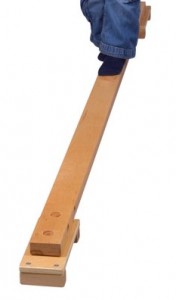
~Climbing
~Balance beam
~Bicycling
~Piano
~Sorting 
Brain-organizing activities…
~Memory matching
~Tonal music
~Free-style building with blocks, tinkertoys, legos, etc.
~Design-matching building
~Sensory bins
Eye-tracking activities…
~Laser pointer games-following a laser pointer light in a darkened room, pointing to moving targets (i.e. bubbles), etc.
~Ceiling tracing-following the seam of the wall and ceiling from corner to corner moving only the eyes
~Video games-Flash Focus and Brain Age are good choices for the Gameboy. Wii Fit, Carnival Games, and Sports Games are good for the Wii. There are also great games for improving eye-tracking for the X-box, Playstation, and online. If you do the research to find what best fits your child’s interests, you’ll have much better participation!
Visual-motor learning…
~Clay letters-tactile learning by forming letters and words on a template with clay or dough 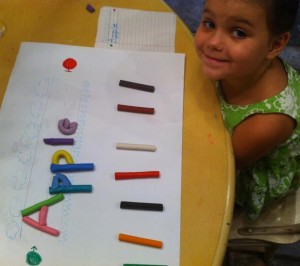
~Contextual learning-Children with dyslexia tend to learn better in context than by breaking things down to their parts, so phonics-based learning is often mind-boggling for them. Flashcards are a no-go because speed and movement impede their attempts to focus rather than help them. Writing-based learning such as copying and illustrating short poems, copying a short sentence from a wall-mounted chalkboard or large paper taped to the wall and illustrating it, writing and illustrating their own stories, and writing stories on the computer are great ways to help them learn to read.
~Once they are beginning to read, graphic novels, large-print chapter books on topics that interest them, and continued creative writing are excellent practice.
~Online reading games can be helpful, but only if they are untimed (Timed anything is a huge stressor and sets them up for frustration and failure.) and your child feels comfortable with the level of activity and brightness on the screen as otherwise these can cause headaches and their eyes to tire quickly.
These tips are not, of course, exhaustive or a replacement for professional therapies. But as you work your way through what can often be a labyrinth of paperwork, meetings, appointments, etc. on your way to finding the services your child needs, these may help to ease the wait a bit. 🙂
Related posts:
Children who love to read…READ! Engaging children’s hearts in the wonder of reading instead of just training their minds in its mechanics. Raising Bookworms
It’s time for a return to childhood, to simplicity, to running and climbing and laughing in the sunshine, to experiencing happiness instead of being trained for a lifetime of pursuing happiness…it’s time to let children be children again. A Return to Childhood
Think homeschooled children are unsocialized, over-controlled, locked-away-from-the-world misfits? Think again! My Renaissance Girl
Successful reading means far more than possessing the ability to read. Engaging the hearts of students moves reading success beyond a life skill and turns it into a life style. And graphic novels are too powerful of a tool in our arsenal to be disregarded because of pride or prejudice. Raising Super Readers~The MARVELous Power of Comic Books!
In the world of a child wonders are as simple as sticks and sheets, leaves and books, boxes and giggles, and the promise in a rainy day. The Seven Wonders of the World of Childhood
Parenting choices strongly impact the level and type of attachment a child develops and, by extension, the development of a love of learning. A love of learning grows when it isn’t stifled by fear or stress or regimented by over-structuring or a focus on achievement or competition. Parents fostering a healthy attachment are thus also fostering a life-long love of learning in their children. Live to Play~Play to Learn~Learn to Live!
If you give a toddler a book
He’ll climb into your lap
While he’s in your lap
He might lay his head on your chest
When he lays his head on your chest
He’ll hear your heartbeat
When he hears your heartbeat
He’ll probably ask if you can hear… If You Give A Toddler A Book…
Einstein recognized his unique lens and often commented about it and about how organized education systems didn’t accommodate individuality and creativity. Here is a look into this ‘unique learner’s’ mind in his own words…Beautiful Minds
 Award-winnning author, L.R.Knost, is the founder and director of the children's rights advocacy and family consulting group, Little Hearts/Gentle Parenting Resources, and Editor-in-Chief of Holistic Parenting Magazine. Books by L.R.Knost include Whispers Through Time: Communication Through the Ages and Stages of Childhood ; Two Thousand Kisses a Day: Gentle Parenting Through the Ages and Stages ; The Gentle Parent: Positive, Practical, Effective Discipline ; and Jesus, the Gentle Parent: Gentle Christian Parenting the first four books in the Little Hearts Handbook gentle parenting series, and children’s picture books Petey’s Listening Ears and the soon-to-be-released Grumpykins series.
Award-winnning author, L.R.Knost, is the founder and director of the children's rights advocacy and family consulting group, Little Hearts/Gentle Parenting Resources, and Editor-in-Chief of Holistic Parenting Magazine. Books by L.R.Knost include Whispers Through Time: Communication Through the Ages and Stages of Childhood ; Two Thousand Kisses a Day: Gentle Parenting Through the Ages and Stages ; The Gentle Parent: Positive, Practical, Effective Discipline ; and Jesus, the Gentle Parent: Gentle Christian Parenting the first four books in the Little Hearts Handbook gentle parenting series, and children’s picture books Petey’s Listening Ears and the soon-to-be-released Grumpykins series.
12 Tips for Gently Parenting Your Adult Children (Hint: It starts when they’re newborns)
[Portions reprinted from Two Thousand Kisses a Day: Gentle Parenting Through the Ages and Stages by L.R.Knost. Whispers Through Time: Communication Through the Ages and Stages of Childhood; The Gentle Parent: Positive, Practical, Effective Discipline; and Jesus, the Gentle Parent: Gentle Christian Parenting also available on Amazon and through other major retailers.]
~~~~~~~~~~~~~~~~~~~~~
“Life is a succession of lessons which must be lived to be understood.” ~Ralph Waldo Emerson
 All stages of parenting come with their own unique learning curve, their own challenges and frustrations, their own compromises and sacrifices, and their own flubs, false steps, and failures. From those first terror-stricken days with a newborn to the sleep-deprived months of infancy to the challenges of toddlerhood and beyond, parenting is a journey, not a destination. And when subsequent little ones arrive, the journey starts all over again as we discover that the lessons learned from parenting one child don’t always apply to the next as each have their own incomparable personalities, quirks, and individual identities.
All stages of parenting come with their own unique learning curve, their own challenges and frustrations, their own compromises and sacrifices, and their own flubs, false steps, and failures. From those first terror-stricken days with a newborn to the sleep-deprived months of infancy to the challenges of toddlerhood and beyond, parenting is a journey, not a destination. And when subsequent little ones arrive, the journey starts all over again as we discover that the lessons learned from parenting one child don’t always apply to the next as each have their own incomparable personalities, quirks, and individual identities.
The principles of gentle parenting (connection, empathy, respect, etc.) don’t change as our children grow, just as they don’t change from one child to the next. What does change is our understanding of those principles as we grow in wisdom and experience as parents and as human beings. The practical application of gentle parenting principles, though, can look very different from child to child and life stage to life stage. For instance, with an introverted child gentle parenting might involve a greater degree of physical proximity and emotional support whereas with a very extroverted child it may involve a greater degree of energy direction and respectful guidance.
This constancy of principles and individualized application of gentle parenting is no less true when parenting our adult children than it is when parenting our minor children. As gentle parents, we are our children’s first and best friend in the purest and truest definition of friendship. That sets the stage for the transition from the early parent/friend years to the parent-friendship that will characterize our relationship when our children grow into adulthood.
Here are 12 practical tips for gently parenting your adult children:
1.) Begin to consciously pay attention to your own parents’ interactions with you. Mentally catalog what you find helpful and what you find intrusive, what is an acceptable level of involvement, advice, and interaction and what feels overbearing or lacking. Make a mental note (or make actual notes if you’re a list person like me) to remember those feelings when your own children become adults.
2.) Remember, parenting is literally ‘on the job’ learning. Your parents are discovering by trial and error (often lots of error) what their roles and boundaries are in this uncharted territory of parenting adults. Model giving your parents grace when they overstep or underplay their roles. This will set the stage for your children to extend the same grace to you when seemingly overnight you suddenly find yourself learning to parent your own adult children.
3.) While your child is an infant, meet their needs swiftly, consistently, and gently. They won’t remember what you did or didn’t do at this stage, but they will always carry with them the safety, security, and love that they feel in your responsiveness, and that is they will take with them into adulthood.
4.) When your child reaches toddlerhood, focus on connection rather than correction. What will matter most in later years won’t be whether they wore matching shoes or left the park without pitching a fit. What will matter is whether they felt heard, understood, and respected.
5.) As your child moves into the preschool and early childhood years, focus on communication, whether that takes the form of whining, tattling, endless questions or some combination of all three. Continue to build a trust relationship by hearing their heart rather than their tone and responding with gentle guidance.
6.) When your child reaches the middle stages of childhood, listening to the endless stories from your chatterbox or offering empathy and quiet support to your dreamer will help them as they explore who they are and who they want to be when they grow up. You are building the friendship of a lifetime in these interactions, so make them a priority.
7.) Once your child enters the teen years, consciously begin to gradually shift your role into a supporting rather than a leading act. Listen not to their words, their attitudes, their hormones, their angst. Listen instead to their struggles, their hopes, their dreams, their fears. Remember, you are the only adult in the relationship at this point. They still have a lot of maturing to do. Practice self-control. Be honest about your own struggles, fears, and failings. You’ll be amazed at what a connection point that is as your teen discovers that they aren’t alone in their humanness. Be the first one to listen, the first one to forgive, the first one to apologize, the first one to understand, the first one to back down and try to find another way when the going gets tough.
8.) When your child becomes an adult, let them set the pace. Some children will hit eighteen and be ready to move into a university dorm or get a job and an apartment right away. Others will need a slower transition. They may need to stay at home while going to university or while taking some time to try out different jobs as they explore this strange new world of adulthood. There’s nothing wrong with adult children living at home, especially in difficult economic times such as these, but if the time comes that you feel they need a gentle nudge out of the nest you can help them to find an acceptable roommate or two and guide them through the process of settling into independent adulthood.
9.) Once your child is out on their own, your role will shift fully to a support system. Offering unsolicited advice is fine as long as it is briefly stated…once. After that, it becomes intrusive. Offers of help and invitations to family events, etc. should follow the same guidelines.
10.) When your child starts a family of their own, consciously bring to mind how you felt at various times when your own parents supported you in your new role and/or interfered with the establishment of your new little family. Acknowledge to yourself (and to them) that they won’t do everything the way you did, that they will make decisions you wouldn’t make, that you will offer advice that won’t be heeded, and that they will make mistakes and have to learn from them just like you did, and remind yourself that those things are all perfectly okay.
11.) On the subject of making mistakes, remember, just as you wouldn’t want every youthful mistake, every wrong choice, every unfortunate decision to be broadcast to the world or even just joked about privately instead of being left in the past where it belongs, be sure to practice ‘The Golden Rule of Parenting’ and treat your children how you prefer to be treated.
12.) Keep in mind that the person you are now isn’t the person you were when you first started out on your journey into adulthood. Expecting your young adult children to think and experience and process life and events the way that you do now is like expecting a newborn baby to be able to pick up a book and read it. So set aside your expectations and just offer your support as they learn to navigate the world of adulthood on their own.
Remember, our life experience can help our adult children, but they need to gain their own life experiences. Our role as parents of adults is to find the balance between too much and too little of pretty much everything: advice, help, assistance, involvement, etc. The voice of experience has an immense amount of wisdom to offer, but only if it also has the wisdom to know when to remain silent.
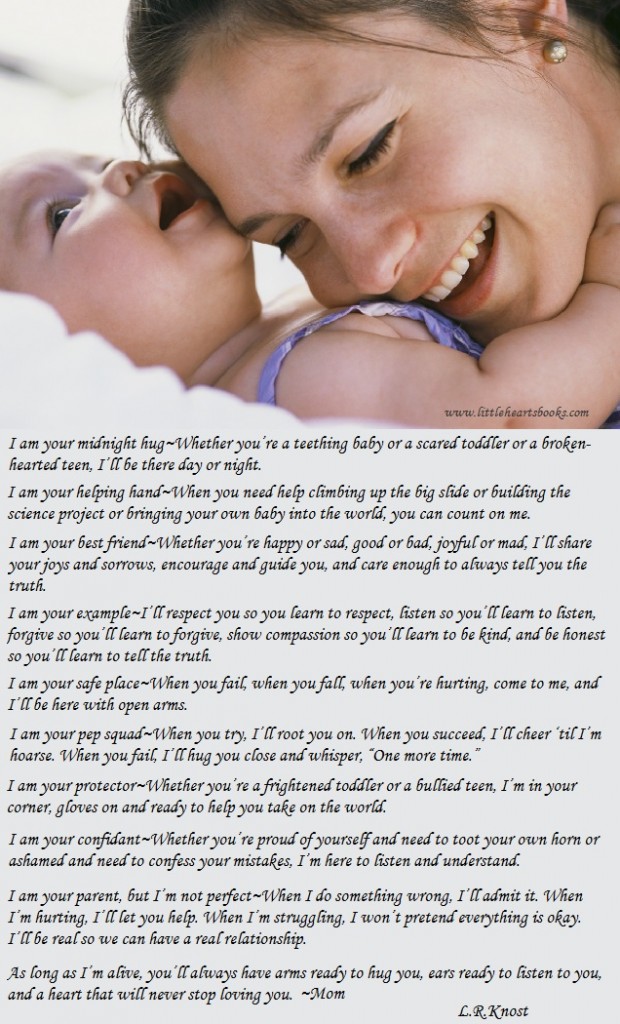
Related posts:
Backtalk is Communication…LISTEN
The Gift of a Strong-Willed Child
Bridge Over Troubled Waters~Parenting a ‘Problem’ Child
Two Thousand Connection Points a Day: Attachment Parenting Beyond Infancy
A Boy, A Girl, and A Baby~Journey to Gentle Parenting
 Award-winnning author, L.R.Knost, is the founder and director of the children's rights advocacy and family consulting group, Little Hearts/Gentle Parenting Resources, and Editor-in-Chief of Holistic Parenting Magazine. Books by L.R.Knost include Whispers Through Time: Communication Through the Ages and Stages of Childhood ; Two Thousand Kisses a Day: Gentle Parenting Through the Ages and Stages ; The Gentle Parent: Positive, Practical, Effective Discipline ; and Jesus, the Gentle Parent: Gentle Christian Parenting the first four books in the Little Hearts Handbook gentle parenting series, and children’s picture books Petey’s Listening Ears and the soon-to-be-released Grumpykins series.
Award-winnning author, L.R.Knost, is the founder and director of the children's rights advocacy and family consulting group, Little Hearts/Gentle Parenting Resources, and Editor-in-Chief of Holistic Parenting Magazine. Books by L.R.Knost include Whispers Through Time: Communication Through the Ages and Stages of Childhood ; Two Thousand Kisses a Day: Gentle Parenting Through the Ages and Stages ; The Gentle Parent: Positive, Practical, Effective Discipline ; and Jesus, the Gentle Parent: Gentle Christian Parenting the first four books in the Little Hearts Handbook gentle parenting series, and children’s picture books Petey’s Listening Ears and the soon-to-be-released Grumpykins series.
Bringing Up Binary: Raising an Obedient Computer
Dear Customer Service,
I think my computer needs professional help. I just don’t know what to do anymore. It won’t respond to me half of the time, and the other half its response is so slow it might as well not respond at all! I need help, and I don’t know where else to turn. Here’s the story:
 I remember how excited I was when I first got my computer. I carefully cut the tape on the box, gently lifted it out, and gingerly settled it in the well-appointed and super organized office I’d had decorated and waiting for what seemed like forever.
I remember how excited I was when I first got my computer. I carefully cut the tape on the box, gently lifted it out, and gingerly settled it in the well-appointed and super organized office I’d had decorated and waiting for what seemed like forever.
Now what to do? I’d never owned a computer before and was so nervous I’d somehow break it. I searched through manuals and how-to’s for dummies, looking for tips from experts and guidance from other computer owners with years of experience. It was so frustrating because everyone seemed to have a different opinion about what to expect and what was important and how to handle all the hardware and software issues that were bound to crop up with computer ownership.
Over time, though, I got more comfortable in my new role as a computer owner. My tentative key tapping became more confident, and I operated my computer like a pro. But then minor irritations began to creep up. I’d input a command and have to wait for my computer to process before it responded, but why should I have to wait? I’d issued the same commands hundreds of times since my computer had arrived. Shouldn’t it obey instantly? I certainly thought so! So, I’d push the enter button a couple more times, and then a couple more, then some other buttons, and the darn thing would freeze up on me!!! Seriously?!?
I’m no push-over, believe me, and I wasn’t about to be manipulated by my own computer! So, I started unplugging it every time it froze. After a few minutes, I’d plug it back in again, but even after extending its time-out of the outlet to longer and longer periods, my computer was still giving me that ring of delayed obedience and then freezing when I pushed its buttons. So, I started giving it a gentle whack on its CPU. (No, I was not abusing it. I was just giving it a little tap to get its attention!) But nothing seemed to be working. I was still having to wait for it to process my commands, and it was actually getting worse!
Then my computer started popping up demands, right in front of what I was working on! “Updates needed.” “Virus software update available.” Me, me, me. I want. I want. I want. Isn’t it amazing how completely self-absorbed computers are? Didn’t my computer realize I had a schedule to keep? I had things that needed to get done, an agenda, a life! And on top of all that, I’d just purchased a new little laptop that needed my attention. Why couldn’t my computer understand that it just had to do what it was told and stop giving me a hard time?!? Selfish, that’s why!
“Virus software update available.” Me, me, me. I want. I want. I want. Isn’t it amazing how completely self-absorbed computers are? Didn’t my computer realize I had a schedule to keep? I had things that needed to get done, an agenda, a life! And on top of all that, I’d just purchased a new little laptop that needed my attention. Why couldn’t my computer understand that it just had to do what it was told and stop giving me a hard time?!? Selfish, that’s why!
Well, time went on and my computer kept up it’s delayed obedience and just kept escalating its constant demands with pop up after pop up after pop up. But I knew better than to give in. All it wanted was attention! So I alternated between time-out of the outlet and well-deserved whacks to the CPU, but all I got was slower and slower obedience, longer and longer freezes, and just general unresponsiveness.
I’ve tried to be a good computer owner, but I’m at the end of my tether. Please help!
Sincerely,
Frustrated
Dear Frustrated,
Computers are designed to process input. Basically, that means you get out what you put in. That “demand for attention” is actually your computer communicating a need for input from you, whether it’s for an update  or a virus scan or whatever it’s indicating it needs. If you meet it’s needs, that will not only stop the “demands” but also free it up to run more smoothly and responsively for you. As far as the “delayed obedience,” that’s just how computers are built. It needs time to process your input so that it can respond appropriately. Pushing its buttons over and over is actually causing the freezing you’re concerned about, and unplugging your computer when it freezes just shuts it down right when it’s trying its hardest to work things out. Remember, interaction between owner and computer is the core of computer processing. Finally, stop “whacking” your computer. Call it what you want…hitting, tapping, popping, or whatever…it’s just causing internal damage and resulting in the very problems you’re trying to solve.
or a virus scan or whatever it’s indicating it needs. If you meet it’s needs, that will not only stop the “demands” but also free it up to run more smoothly and responsively for you. As far as the “delayed obedience,” that’s just how computers are built. It needs time to process your input so that it can respond appropriately. Pushing its buttons over and over is actually causing the freezing you’re concerned about, and unplugging your computer when it freezes just shuts it down right when it’s trying its hardest to work things out. Remember, interaction between owner and computer is the core of computer processing. Finally, stop “whacking” your computer. Call it what you want…hitting, tapping, popping, or whatever…it’s just causing internal damage and resulting in the very problems you’re trying to solve.
Sincerely,
Shak N. Mihed
Related posts:
The Measure of Success~Chinese Parents and French Parents Can’t BOTH Be Superior!
Spare the Rod: The Heart of the Matter
Tots to Teens~Communication Through the Ages and Stages
Toddlers, Tantrums, and Time-Ins, Oh My!
 Award-winnning author, L.R.Knost, is the founder and director of the children's rights advocacy and family consulting group, Little Hearts/Gentle Parenting Resources, and Editor-in-Chief of Holistic Parenting Magazine. Books by L.R.Knost include Whispers Through Time: Communication Through the Ages and Stages of Childhood ; Two Thousand Kisses a Day: Gentle Parenting Through the Ages and Stages ; The Gentle Parent: Positive, Practical, Effective Discipline ; and Jesus, the Gentle Parent: Gentle Christian Parenting the first four books in the Little Hearts Handbook gentle parenting series, and children’s picture books Petey’s Listening Ears and the soon-to-be-released Grumpykins series.
Award-winnning author, L.R.Knost, is the founder and director of the children's rights advocacy and family consulting group, Little Hearts/Gentle Parenting Resources, and Editor-in-Chief of Holistic Parenting Magazine. Books by L.R.Knost include Whispers Through Time: Communication Through the Ages and Stages of Childhood ; Two Thousand Kisses a Day: Gentle Parenting Through the Ages and Stages ; The Gentle Parent: Positive, Practical, Effective Discipline ; and Jesus, the Gentle Parent: Gentle Christian Parenting the first four books in the Little Hearts Handbook gentle parenting series, and children’s picture books Petey’s Listening Ears and the soon-to-be-released Grumpykins series.
It’s Okay to Praise Your Child, Just Like it’s Okay to ‘Like’ this Post
 As writers, we’ve all had the experience of publishing a piece we’ve worked hard putting together, and then posting it to Facebook, sharing it on Twitter, and pinning it on Pinterest…and having it just sit there, unliked, unshared, untweeted, and unpinned. Now, logically, we might know that only a small percentage of our audience sees what we share at any given time. And we know that, while some pieces we write hit just the right note at the right time and go flying around the blogosphere, others might need time to catch on or might simply remain a lonely, little, unread, unloved piece of ourselves that we’ve bravely put out there and the world has overlooked. But even knowing all of that, in those times when we share and no one hears us, when we bare our hearts and no one responds, the silence can feel like rejection, the work can feel pointless, the investment can feel wasted.
As writers, we’ve all had the experience of publishing a piece we’ve worked hard putting together, and then posting it to Facebook, sharing it on Twitter, and pinning it on Pinterest…and having it just sit there, unliked, unshared, untweeted, and unpinned. Now, logically, we might know that only a small percentage of our audience sees what we share at any given time. And we know that, while some pieces we write hit just the right note at the right time and go flying around the blogosphere, others might need time to catch on or might simply remain a lonely, little, unread, unloved piece of ourselves that we’ve bravely put out there and the world has overlooked. But even knowing all of that, in those times when we share and no one hears us, when we bare our hearts and no one responds, the silence can feel like rejection, the work can feel pointless, the investment can feel wasted.
Our readers have lives of their own that usually don’t include hours of research and writing and editing and formatting and tagging and linking. They may not realize that their likes, comments, and shares are major motivators for us. They might not understand that, while our passion for our message, whatever that may be, is what drives us, their response is like a pat on the back, and a simple “Well said!” can make our day. And they may not be remotely conscious of how deflating, demoralizing, and depressing that awkward, deafening silence can be when a post goes ignored.
Most of us don’t make a penny from our blogs, but we’re okay with the heavy time investment, the personal sacrifices, and the risks involved in sharing our hearts so transparently…as long as we are heard. And how do we know if we’re being heard? Our readers’ responses, their ‘likes,’ their pins and tweets and shares, and their comments that tell us they’re listening, that they care, and that they appreciate our work.
And what makes writers want to quit? What makes them want to shut down their laptops, hang up their message, and go back to watching sit-coms, reading books, or doing whatever they used to do when they actually had downtime? Well, certainly meanness from people who’d rather cause trouble than just move on to another site, for one, but often it’s simply the silence that drains away the motivation. Sharing your heart with a world that doesn’t respond makes a person feel small, insignificant, unappreciated.
Enter the child.
A child comes to his mother with a drawing that resembles a game of pick-up-sticks and proudly announces that he’s designed a new airplane. She grins and says, “Good job!” and he runs off happily to draw some more pick-up-stick inventions. But his mother is cringing at her choice of words, wishing she’d stopped mid-diaper change with the new baby and turned her full attention to her son and said something like, “I see that you worked hard. You used lots of colors,” or something, anything that didn’t pander to his need for attention or approval. What if she turned him into a ‘praise junkie’?!? Bad mom! she castigates herself. When her son returns a few minutes later and enthusiastically shows her his pick-up-stick submarine, she’s ready. She smiles awkwardly, nods her head and says, “You obviously are trying to use your imagination. I see that you are in a creative mood. What else are you going to invent today?” in a stiff and unnatural tone. Her son stands there for a moment, not quite sure how to respond, then shrugs and drifts off to another activity.
Now, clearly, using “Good job” as a brush-off in lieu of taking the time to pay any real attention to a child is the core issue that parenting experts are getting at when they encourage parents to focus on the child and the effort instead of the product or achievement. But so often parents read these kinds of articles and come away feeling, as a concerned mother recently expressed to me, “Like I’m doing it all wrong. I feel like I’m messing up my child when I tell him I like what he’s done.” That mother wasn’t brushing her child off with her praise. She was interacting with her child with a natural, honest enthusiasm that may now be damaged by something she read. It breaks my heart to think of her little guy running up to show her his latest creation only to be met with an unnatural and stilted response because his mother is afraid her instincts aren’t good enough.
Here’s the thing, a healthy, natural, loving parent/child relationship trumps all. It is the foundation for autonomy, not merely a satellite aid to independence. It is the wellspring of confidence and trust that leads to exploration, creativity, and innovation. It is the safe harbor from which daring and boldness and risk can be launched to take on the world.
A parent whose focus is on connection will respond to their child’s need in the moment, whether that need is praise for a job well done or encouragement in the face of failure. A parent focused on ‘getting the words right’ may well inadvertently leave their child’s present needs unmet because they are afraid to respond naturally.
Just as it is the hungry child, not the satisfied child, who craves food, it is unmet needs that lead to attention seeking behaviors and unspoken approval that can create ‘praise junkies’ as the unpraised child seeks to fill the very human need we all have for validation.
 Just as with adults, and specifically with those of us who are writers, children need to know they are being heard and appreciated. A ‘like’ on a post to us is like a pat on the back to a child, and a “Well said!” to a writer is like a “Good job!” to a child. In the same way that these acknowledgements don’t undermine our driving passions, but support and encourage them, spontaneous and sincere expressions of appreciation to a child don’t undermine a child’s passion to learn and grow and become. It is, in fact, the exact opposite. A parent’s sincere, spontaneous praise encourages and motivates a child to blossom in the warmth of their approval.
Just as with adults, and specifically with those of us who are writers, children need to know they are being heard and appreciated. A ‘like’ on a post to us is like a pat on the back to a child, and a “Well said!” to a writer is like a “Good job!” to a child. In the same way that these acknowledgements don’t undermine our driving passions, but support and encourage them, spontaneous and sincere expressions of appreciation to a child don’t undermine a child’s passion to learn and grow and become. It is, in fact, the exact opposite. A parent’s sincere, spontaneous praise encourages and motivates a child to blossom in the warmth of their approval.
With my six children, while they are infants I am happy to let them independently scoot and shuffle and roll in an effort to reach a toy, but I am there to offer help the second they express frustration so they will grow up knowing that they never have to struggle alone in life. When they are older and happily working on a drawing or popsicle-stick invention, I don’t hesitate to spontaneously express my enjoyment of their creation. That isn’t interference. It’s a connection point, a message that they don’t have to actively seek my approval for it to be theirs.
I know that the world won’t always treat my children kindly. I know that failure, disapproval, and rejection will inevitably be a part of their lives. But I want my children to grow up knowing that there is one place in the world where help is always available, and approval, acceptance, and appreciation are always freely offered. I want my children to have the assurance of a safe harbor to return to so that they will have the confidence to take on all the challenges the world will throw at them.
And so, parents, the message here is this: Read and research and educate yourself about all the various ideas and methods and theories about how to raise happy, healthy, confident children, but at the end of the day remember that you are your child’s parent. You love your child more and know them better than anyone else on earth. Don’t let anything stop you from responding naturally and lovingly to your child’s needs, whether those needs are for a high-five, a “Good job,” a thumb’s up, or just a great big bear hug.
Remember, the only bad praise is the sincerely meant praise that is silenced. ~L.R.Knost
“Well done, good and faithful servant.” Matt. 25:21
Listen to the sound of silence.
Related posts:
200 Ways to Bless Your Children with a Happy Childhood
Your Baby isn’t Trying to Annoy You; He’s Trying to Communicate!
Tots to Teens~Communication Through the Ages and Stages
3 Simple Steps from Diapers to Potty
A Place to Rest~Becoming Your Child’s Safe Harbor
Love in the Time of Cosleeping
 Award-winnning author, L.R.Knost, is the founder and director of the children's rights advocacy and family consulting group, Little Hearts/Gentle Parenting Resources, and Editor-in-Chief of Holistic Parenting Magazine. Books by L.R.Knost include Whispers Through Time: Communication Through the Ages and Stages of Childhood ; Two Thousand Kisses a Day: Gentle Parenting Through the Ages and Stages ; The Gentle Parent: Positive, Practical, Effective Discipline ; and Jesus, the Gentle Parent: Gentle Christian Parenting the first four books in the Little Hearts Handbook gentle parenting series, and children’s picture books Petey’s Listening Ears and the soon-to-be-released Grumpykins series.
Award-winnning author, L.R.Knost, is the founder and director of the children's rights advocacy and family consulting group, Little Hearts/Gentle Parenting Resources, and Editor-in-Chief of Holistic Parenting Magazine. Books by L.R.Knost include Whispers Through Time: Communication Through the Ages and Stages of Childhood ; Two Thousand Kisses a Day: Gentle Parenting Through the Ages and Stages ; The Gentle Parent: Positive, Practical, Effective Discipline ; and Jesus, the Gentle Parent: Gentle Christian Parenting the first four books in the Little Hearts Handbook gentle parenting series, and children’s picture books Petey’s Listening Ears and the soon-to-be-released Grumpykins series.
When Children Hit~10 Tips for Parents
[Portions reprinted from The Gentle Parent: Positive, Practical, Effective Discipline by L.R.Knost. Two Thousand Kisses a Day: Gentle Parenting Through the Ages and Stages and Whispers Through Time: Communication Through the Ages and Stages of Childhood also available on Amazon and through other major retailers.]
 Toddlers and preschoolers are still in the early stages of learning to communicate verbally. Add to that the fact that they have little-to-no impulse control and very immature social skills, and you’ve got a recipe for an instinctive physical response (i.e. hitting, kicking, biting, hair pulling, throwing things, etc.) to situations in which they are frustrated, angry, scared, or just tired and out-of-sorts.
Toddlers and preschoolers are still in the early stages of learning to communicate verbally. Add to that the fact that they have little-to-no impulse control and very immature social skills, and you’ve got a recipe for an instinctive physical response (i.e. hitting, kicking, biting, hair pulling, throwing things, etc.) to situations in which they are frustrated, angry, scared, or just tired and out-of-sorts.
Many parents who practice gentle discipline wonder where their little one picked up the behavior, not realizing that it is a normal and age-appropriate reaction, albeit an unacceptable one. Very often parents are advised to spank their child to train them not to hit others, especially those who are smaller and weaker than they are. (more…)
 Award-winnning author, L.R.Knost, is the founder and director of the children's rights advocacy and family consulting group, Little Hearts/Gentle Parenting Resources, and Editor-in-Chief of Holistic Parenting Magazine. Books by L.R.Knost include Whispers Through Time: Communication Through the Ages and Stages of Childhood ; Two Thousand Kisses a Day: Gentle Parenting Through the Ages and Stages ; The Gentle Parent: Positive, Practical, Effective Discipline ; and Jesus, the Gentle Parent: Gentle Christian Parenting the first four books in the Little Hearts Handbook gentle parenting series, and children’s picture books Petey’s Listening Ears and the soon-to-be-released Grumpykins series.
Award-winnning author, L.R.Knost, is the founder and director of the children's rights advocacy and family consulting group, Little Hearts/Gentle Parenting Resources, and Editor-in-Chief of Holistic Parenting Magazine. Books by L.R.Knost include Whispers Through Time: Communication Through the Ages and Stages of Childhood ; Two Thousand Kisses a Day: Gentle Parenting Through the Ages and Stages ; The Gentle Parent: Positive, Practical, Effective Discipline ; and Jesus, the Gentle Parent: Gentle Christian Parenting the first four books in the Little Hearts Handbook gentle parenting series, and children’s picture books Petey’s Listening Ears and the soon-to-be-released Grumpykins series.
You’re Not the Boss of Me!
 [Portions reprinted from The Gentle Parent: Positive, Practical, Effective Discipline by L.R.Knost. Two Thousand Kisses a Day: Gentle Parenting Through the Ages and Stages and Whispers Through Time: Communication Through the Ages and Stages of Childhood also available on Amazon and through other major retailers.]
[Portions reprinted from The Gentle Parent: Positive, Practical, Effective Discipline by L.R.Knost. Two Thousand Kisses a Day: Gentle Parenting Through the Ages and Stages and Whispers Through Time: Communication Through the Ages and Stages of Childhood also available on Amazon and through other major retailers.]
Few things ignite a parent’s temper like defiance. It feels like a slap in the face, a direct challenge to our authority. Power card…played. Gauntlet…thrown. Challenge…accepted?
Time out! No, not time-out as in punish your child, but time out as in hit the parental pause button, take a step back, assess the situation, and get some adult perspective.
There are three things to consider:
- Behaviors are communication. What is your child trying to communicate?
- Is the behavior really defiance, or did your child’s action hit a nerve in you for some reason?
- If the behavior is, in fact, defiance, what circumstances preceded it?
Once you’ve assessed the situation, you can more effectively address it. If your child is communicating an unmet need such as a need for more interaction from you, a need to be heard, or if they simply need an outlet for their energy, you can first meet those needs and then offer your child ideas about how to better communicate their needs to you in the future.
The same process applies if your child’s behavior is communicating stress, anger, fear, or insecurity. Taking a step back allows you to not only see the emotion behind the action, but also gives you a moment to consider if there have been any big transitions in your child’s life such as a move or change in childcare or a recent illness (or, possibly, a breach in trust if you have ‘lost it’ and yelled, threatened, or spanked) that they may have big feelings about but are not able to articulate. First you can meet those emotional needs with empathic listening, offering words to help them articulate their feelings, apologizing if you have broken trust with them, and providing an outlet for their pent up emotions. Then you can address their behavior by giving them options for expressing their needs in more acceptable ways.
Meeting their needs before addressing their behavior is vital because it lowers their defenses, clears whatever is cluttering up your parent/child connection, and opens the pathways to communication, in effect turning on their listening ears!
*On a side note, be aware that it is possible, especially with very young children, that what you are interpreting as defiance is actually age-appropriate curiosity and exploration. A twelve month old who repeatedly pulls the cat’s tail may be experimenting with the interesting sound the cat makes, the soft texture of the fur, her own feeling of power, or just trying to find out if pulling the tail is as ‘not-okay’ after her nap as it was before. Little ones too young to grasp the concept of permanence (typically those less than twenty-four to thirty months) live very much in the moment and cannot be expected to understand the permanent nature of rules and limits. Removing temptations (commonly referred to as baby-proofing) is not only for their safety, but is also a visual form of limit setting. A common misconception is that removing temptations is passive or indulgent parenting, but it is actually proactive parenting (whereas passive/indulgent parenting would be simply allowing the behavior) and is an effective and gentle beginning to the process of boundary setting.
If in taking a step back to assess the situation you discover that your child’s behavior isn’t really defiance, but a nerve was hit in you that caused you to perceive it that way, you can first address your child’s need and then their behavior, if necessary, but then take the time to address your own needs. Perhaps you have an unmet need to be heard by your spouse, boss, or even your own parents, or maybe there is a wound from your past that needs to be healed or a source of stress in your life that is causing you to feel overwhelmed. Taking an honest look at your own needs and hurts and stressors and dealing with those issues will not only benefit your parenting, but your life in general!
If your ‘time out’ assessment reveals that the circumstances preceding your child’s defiance contributed to it, you can learn from that and find ways to avoid those circumstances in the future. For instance, you may realize that hunger or tiredness or over-scheduling are triggers for your child’s behavior. Or you may see that your wording is provoking a negative response. (The word ‘no’ can be a trigger for a power struggle. Try rephrasing your no’s into yes’s. For instance, instead of “No, you can’t have ice cream until after dinner” you could try “I know you love ice cream. I do, too! We’re getting ready to eat right now, but what flavor would you like after dinner?” The objective is to set the same limit, but phrase it in a way that invites cooperation instead of triggering opposition.) You might realize you are inadvertently communicating your own stress to your child or even taking it out on them. Or you may have slipped into a negative parenting pattern and be ‘powering up’ on your child, in effect throwing down the gauntlet yourself, and they are merely reflecting your behavior. Whatever the case may be, learn from it, make the necessary adjustments, repair your relationship with an apology if needed, reconnect with your child, and then share ideas about better ways both of you can handle things in the future.
Keep in mind, though, that sometimes what parents perceive as defiance is really just a child testing their boundaries to make sure that they are secure. Children need to know they’re safe, and a parent who is confident and comfortable enough in their leadership to calmly and gently guide their child to stay within their boundaries is very reassuring. The goal of gentle parenting, however, is not controlling children, but equipping them to control themselves (in other words, we want to teach them to be ‘the boss’ of themselves!) So if your child is testing their boundaries, be careful to respond with guidance, not punishment.
Finally, remember, you are raising a little human with thoughts, needs, ideas, and a personality all their own. They aren’t perfect any more than you are, and expecting perfection will lead to conflict, not connection. When they make mistakes, choose understanding, not anger. When they make poor choices, choose guidance, not punishment. And when they challenge your authority and throw down that gauntlet of defiance, choose peace, not warfare. Remember, you don’t have to attend every fight you’re invited to!
~~~~~~~~~~~~~~
Related posts:
Toddlers, Tantrums, and Time-In’s, Oh My!
The Gift of a Strong-Willed Child
Backtalk is Communication…LISTEN
When Children Act Out ~ Reflecting Our Emotions
Bridge Over Troubled Waters~Parenting a ‘Problem’ Child
The Taming of the Tantrum: A Toddler’s Perspective
Practical, Gentle, Effective Discipline
200 Ways to Bless Your Children with a Happy Childhood
 Award-winnning author, L.R.Knost, is the founder and director of the children's rights advocacy and family consulting group, Little Hearts/Gentle Parenting Resources, and Editor-in-Chief of Holistic Parenting Magazine. Books by L.R.Knost include Whispers Through Time: Communication Through the Ages and Stages of Childhood ; Two Thousand Kisses a Day: Gentle Parenting Through the Ages and Stages ; The Gentle Parent: Positive, Practical, Effective Discipline ; and Jesus, the Gentle Parent: Gentle Christian Parenting the first four books in the Little Hearts Handbook gentle parenting series, and children’s picture books Petey’s Listening Ears and the soon-to-be-released Grumpykins series.
Award-winnning author, L.R.Knost, is the founder and director of the children's rights advocacy and family consulting group, Little Hearts/Gentle Parenting Resources, and Editor-in-Chief of Holistic Parenting Magazine. Books by L.R.Knost include Whispers Through Time: Communication Through the Ages and Stages of Childhood ; Two Thousand Kisses a Day: Gentle Parenting Through the Ages and Stages ; The Gentle Parent: Positive, Practical, Effective Discipline ; and Jesus, the Gentle Parent: Gentle Christian Parenting the first four books in the Little Hearts Handbook gentle parenting series, and children’s picture books Petey’s Listening Ears and the soon-to-be-released Grumpykins series.
The Trouble With Kids Today
[Portions reprinted from Two Thousand Kisses a Day: Gentle Parenting Through the Ages and Stages by L.R.Knost available on Amazon]
 “People are telling parents like me that we are failing our children because we practice controlled discipline in our homes. I say: the children that are raised without it are the ones being abused and robbed of the chance of success in adulthood.” Controlled discipline in the eyes of this author of I Don’t Like Spanking My Kids, But I Do It Anyway is physical punishment. Equating discipline with punishment is a common misconception, but she is, unfortunately, not alone in her stance.
“People are telling parents like me that we are failing our children because we practice controlled discipline in our homes. I say: the children that are raised without it are the ones being abused and robbed of the chance of success in adulthood.” Controlled discipline in the eyes of this author of I Don’t Like Spanking My Kids, But I Do It Anyway is physical punishment. Equating discipline with punishment is a common misconception, but she is, unfortunately, not alone in her stance.
Many of today’s most popular self-proclaimed parenting ‘experts’ also equate physical punishment with discipline and go to great lengths to describe the best methods and tools for hitting children along with instructing parents to maintain a calm, controlled, and even cheerful demeanor as they ‘lovingly’ hit their children.
It is interesting to note here that, when it comes to the law, crimes of passion are treated as less heinous than premeditated, planned, and purposefully executed crimes which are termed ‘in cold blood.’ And yet when physically punishing a child, a crime in many places across the globe, hitting in anger or frustration (i.e. passion) is deemed wrong by proponents of spanking, while hitting children with calm and deliberate intent (i.e. premeditation) is encouraged.
It is also interesting to note that, in the not-too-distant past, husbands hitting their wives was also viewed as not only a societal norm, but a necessary part of maintaining a harmonious, successful marriage. In fact, a man who epitomizes the words calm and controlled, Sean Connery, shared his thoughts on the ‘reasonable smacking’ of his wife in a 1987 interview with Barbara Walters:
The core belief behind ‘reasonable smacking’ of wives was that there was no other effective way to control them. I have to agree. If controlling another human being is the goal, then force is necessary. Fear, intimidation, threats, power-plays, physical pain, those are the means of control.
But if growing healthy humans is the goal, then building trust relationships, encouraging, guiding, leading, teaching, communicating, those are the tools for success.
Many parents simply don’t know what else to do. They were raised with spanking as a means of control and “turned out okay” so they default to their own parents’ parenting choices without researching alternatives to spanking or considering whether “okay” could be improved upon.
As to the I Don’t Like Spanking My Kids, But I Do It Anyway author’s contention that “We are raising a generation of children who are over-sensitive because they eventually find out that they aren’t as good at baseball or ballet as some other kid and their parents promised them that everyone is equal. They feel entitled because we teach them that they should. They throw tantrums when life doesn’t go their way because their parents have tiptoed around them to make sure that it does,” that reasoning sounds strangely familiar.
People throughout history have complained about ‘the trouble with kids these days.’ They’ve pinned all the ills of their society on permissive parenting. They’ve ranted about out-of-control children, disrespectful youth, entitlement, spoiling, disobedience, violence, self-centeredness, etc:
“The children now love luxury. They have bad manners, contempt for authority, they show disrespect to their elders…. They no longer rise when elders enter the room. They contradict their parents, chatter before company, gobble up dainties at the table, cross their legs, and are tyrants over their teachers.”
~Socrates, 5th Century BC“What is happening to our young people? They disrespect their elders, they disobey their parents. They ignore the law. They riot in the streets inflamed with wild notions.
Their morals are decaying. What is to become of them?”
~Plato, 5th Century BC“I see no hope for the future of our people if they are dependent on frivolous youth of today, for certainly all youth are reckless beyond words… When I was young, we were taught to be discreet and
respectful of elders, but the present youth are exceedingly wise [disrespectful] and impatient of restraint”
~Hesiod, 8th Century BC“The world is passing through troublous times. The young people of today think of nothing but themselves. They have no reverence for parents or old age. They are impatient of all restraint. They talk as if they knew everything, and what passes for wisdom with us is foolishness with them. As for the girls, they are forward, immodest and unladylike in speech, behavior and dress.”
~Peter the Hermit, 13th Century ADMy grandpa notes the world’s worn cogs
And says we’re going to the dogs.
His grandpa in his house of logs
Said things were going to the dogs.
His grandpa in the Flemish bogs
Said things were going to the dogs.
His grandpa in his hairy togs
Said things were going to the dogs.
But this is what I wish to state:
The dogs have had an awful wait.
~Unknown, circa 1936Small children disturb your sleep, big children your life.
~Yiddish Proverb
Perhaps, just perhaps, there isn’t any ‘trouble with kids today.’ Maybe the trouble is with societies who view normal stages of development as somehow abnormal. Maybe the problem is with parents who repeat the patterns their own parents set and don’t delve into the belief system they are now passing along to their children. Or maybe the problem is simply the rose-colored glasses older generations tend to have about their own youth when they share idealized versions of ‘the good old days.’
Could it be that ‘kid’s today’ are just kids like they have been through the ages, full of exuberance and curiosity and learning their way in a great big world? Could it be that a listening ear, gentle guidance, and trusted arms to turn to when inevitable mistakes are made are really all children need to grow up into kind, helpful, responsible, productive members of our society?
Consider this, “Since more than 90% of American parents admit to spanking their children, it’s hard to accept that a decline in spanking is responsible for the purportedly escalating rates of youth violence and crime. Could it be that the 90% of children who are subject to violence at home in the form of being slapped, paddled, smacked, yanked, whipped, popped, spanked, etc. are taking those lessons out into the world? Is it just possible that children who are hit learn to hit? That children who are hurt learn to hurt? Perhaps the lesson they are learning is that ‘might is right’ and violence is the answer to their problems, the outlet for their stress, the route to getting others to do what they want.” Better Children, Better World
Could it be that sowing peace in our homes is the answer after all?
Related posts:
Practical, Gentle, Effective Discipline
Spare the Rod: The Heart of the Matter
Tots to Teens~Communication Through the Ages and Stages
Testing the Boundaries~What’s A Parent To Do?
One Slippery Sock & Other Silly Tools for your Parenting Toolbox!
The Measure of Success~Chinese Parents and French Parents Can’t BOTH Be Superior!
 Award-winnning author, L.R.Knost, is the founder and director of the children's rights advocacy and family consulting group, Little Hearts/Gentle Parenting Resources, and Editor-in-Chief of Holistic Parenting Magazine. Books by L.R.Knost include Whispers Through Time: Communication Through the Ages and Stages of Childhood ; Two Thousand Kisses a Day: Gentle Parenting Through the Ages and Stages ; The Gentle Parent: Positive, Practical, Effective Discipline ; and Jesus, the Gentle Parent: Gentle Christian Parenting the first four books in the Little Hearts Handbook gentle parenting series, and children’s picture books Petey’s Listening Ears and the soon-to-be-released Grumpykins series.
Award-winnning author, L.R.Knost, is the founder and director of the children's rights advocacy and family consulting group, Little Hearts/Gentle Parenting Resources, and Editor-in-Chief of Holistic Parenting Magazine. Books by L.R.Knost include Whispers Through Time: Communication Through the Ages and Stages of Childhood ; Two Thousand Kisses a Day: Gentle Parenting Through the Ages and Stages ; The Gentle Parent: Positive, Practical, Effective Discipline ; and Jesus, the Gentle Parent: Gentle Christian Parenting the first four books in the Little Hearts Handbook gentle parenting series, and children’s picture books Petey’s Listening Ears and the soon-to-be-released Grumpykins series.
Death of a Butterfly: Helping Children Cope with Loss

[Reprinted from Two Thousand Kisses a Day: Gentle Parenting Through the Ages and Stages by L.R.Knost. Whispers Through Time: Communication Through the Ages and Stages of Childhood and The Gentle Parent: Positive, Practical, Effective Discipline also now available on Amazon and through other major retailers.]
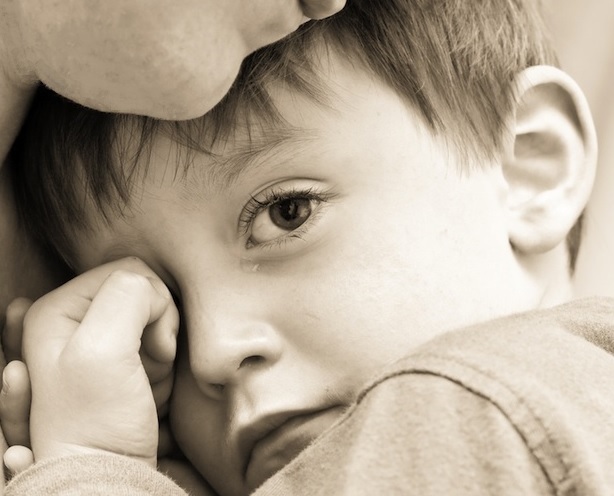 My little Funny Face accidentally killed a butterfly today. Her sweet little heart is broken, poor thing. We’re walking through the stages of mourning together as I use these small (to us adults) losses to equip her with healthy tools for handling the difficult things life will surely bring through the years, as it does to all of us. Whether it’s the death of a butterfly, the loss of a favorite stuffed animal, or another loss that matters to them deeply, guiding children through their uncomfortable and often overwhelming emotions is something parents are often unprepared to handle. Here are the steps we take together when life gets hard and loss becomes a reality to my children:
My little Funny Face accidentally killed a butterfly today. Her sweet little heart is broken, poor thing. We’re walking through the stages of mourning together as I use these small (to us adults) losses to equip her with healthy tools for handling the difficult things life will surely bring through the years, as it does to all of us. Whether it’s the death of a butterfly, the loss of a favorite stuffed animal, or another loss that matters to them deeply, guiding children through their uncomfortable and often overwhelming emotions is something parents are often unprepared to handle. Here are the steps we take together when life gets hard and loss becomes a reality to my children:
1.) Feeling~The first step is simply allowing my children to feel their emotions. If they’re crying, I listen to their cues to know when to offer hugs or if they need some time alone or just someone to sit quietly next to them. If they’re angry, I watch closely to see if they need some directions for a safe outlet such as punching a pillow or going outside to kick a ball or if they are able to just stomp around and get it out that way. If they are unnaturally quiet, I let them know I’m there if they need me and then I leave them alone to sort through their emotions in their own time.
2.) Expressing~The second step is guiding my children to express their feelings in some tangible form. This step begins either when they initiate a conversation about the loss or when I see that their emotions are getting the best of them, indicating that they need some assistance in moving forward. This step may take the form of simply talking through what they are feeling, but typically it includes drawing a picture, making up a song or dictating a poem for me to write down for them, making a memory box, or some combination of each of them.
3.) Refocusing~The third and last step is giving my children ideas about how to move on. It’s often hard for them to figure out how to redirect their thoughts from constantly swirling around their loss. It takes a measure of mental maturity to be able to focus elsewhere when emotions are running high. This is not to say that they should never think about their loss again. I am always open to listening to their feelings and sharing their memories with them. This last step is just gently helping them to consciously shift their attention from what they have lost to what they still have, moving their thoughts from loss to life. This step often takes the form of encouraging them to head outside and play in the mud or climb a tree, or it might be offering to read them a favorite book or play a board game with them or maybe inviting a friend over to play.
While these three steps are in no way exhaustive, the idea behind this process is to simplify the stages of grief in a way that is accessible to parents and understandable to children. And then, when life hits hard and big losses occur such as the loss of a loved one, divorcing parents, etc. having walked through these small losses with our children sets the stage for helping them to work through the harder things while preserving a healthy parent/child connection.
When big life losses do occur, staying in tune with our children and letting them ask questions freely while we work to temper our answers in age appropriate terms is vital. Watching for changes in their behavior helps to give us clues as to what they’re feeling. If they start having trouble sleeping or resisting going to school or having meltdowns, etc. it might be helpful to seek out professional counseling for a brief time. We also need to keep in mind that small children have active imaginations and the line between fantasy and reality is very blurry for them. Death may not impact them much at all if the reality of it doesn’t sink in, or, on the flip side it could have a significant impact and they could begin to imagine all sorts of awful things happening to them or their family or friends. It’s important to let our children lead the way as to how we need to help them cope. Our local library or online at Goodreads or Amazon’s Listopia can also be good resources for age appropriate books on death and grief to share with our children. We do need to be sure to read through them ourselves first to make sure we’re comfortable with how things are presented, though.
Here is a brief, generic ‘script’ that can be used as a starting point for sharing difficult news about a loss with our children:
“I have something to tell you, and it’s a very hard thing. I want you to know that you are safe, and I’m safe, and I’m right here to help you, okay?”
(Give them time to respond.)
“Your (grandpa, aunt, friend, etc.), *name,* died. Do you know what ‘died’ means?”
(Give them time to respond.)
“It means they’re gone to (fill in your belief), and they won’t be coming back.”
(Give them time to respond.)
“It’s okay to be sad or even angry or scared. Those are normal emotions when people die. We are all very sad because we’re going to miss *name.*”
(Give them time to respond.)
“You’ll probably need some time to think about what happened, and you’ll probably have questions. That’s okay. And it’s okay to talk about *name,* too. We all are going to miss *name* and talking about them can help us to remember happy times with them.”
(Give them time to respond.)
“Would you like to make a goodbye card or a memory box? That might help you to feel better.”
Obviously this is a generic script that will need to be adapted based on a child’s responses, but it provides a starting point to open the conversation and begin to walk them through the grieving and healing process. Time does heal, but often it isn’t simply the passage of time that heals, but rather the support and comfort from those with whom we spend that time.
Related posts:
Children in the three to six-year-old age range are beginning to realize that their parents aren’t the all-powerful beings that they once believed them to be. This realization can be very uncomfortable for them, causing them a great deal of unease as they are concurrently beginning to realize that there is a whole, big, wide world beyond their safe, little home, a that the world is full of potential dangers, hazards unknown, and just a lot of really big, scary things. So what is a parent to do with their newly timid little house-mouse? The Age of Fear~Young Children and Anxiety
 Award-winnning author, L.R.Knost, is the founder and director of the children's rights advocacy and family consulting group, Little Hearts/Gentle Parenting Resources, and Editor-in-Chief of Holistic Parenting Magazine. Books by L.R.Knost include Whispers Through Time: Communication Through the Ages and Stages of Childhood ; Two Thousand Kisses a Day: Gentle Parenting Through the Ages and Stages ; The Gentle Parent: Positive, Practical, Effective Discipline ; and Jesus, the Gentle Parent: Gentle Christian Parenting the first four books in the Little Hearts Handbook gentle parenting series, and children’s picture books Petey’s Listening Ears and the soon-to-be-released Grumpykins series.
Award-winnning author, L.R.Knost, is the founder and director of the children's rights advocacy and family consulting group, Little Hearts/Gentle Parenting Resources, and Editor-in-Chief of Holistic Parenting Magazine. Books by L.R.Knost include Whispers Through Time: Communication Through the Ages and Stages of Childhood ; Two Thousand Kisses a Day: Gentle Parenting Through the Ages and Stages ; The Gentle Parent: Positive, Practical, Effective Discipline ; and Jesus, the Gentle Parent: Gentle Christian Parenting the first four books in the Little Hearts Handbook gentle parenting series, and children’s picture books Petey’s Listening Ears and the soon-to-be-released Grumpykins series.
The Age of Fear: 8 Tips to Help Young Children Cope with Anxiety
[Reprinted from Two Thousand Kisses a Day: Gentle Parenting Through the Ages and Stages by L.R.Knost. Whispers Through Time: Communication Through the Ages and Stages of Childhood and The Gentle Parent: Positive, Practical, Effective Discipline also now available on Amazon and through other major retailers.]
Your once fearless five-year-old suddenly refuses to leave your side at the park saying, “I’m afraid the birds will eat me,” while eyeing the tiny swallows hopping on the ground as if they’re evil geniuses plotting his demise.
Your three-year-old, whom you once found proudly grinning while sitting atop the refrigerator, has abruptly decided the swings are objects of abject terror that will, “Fly me to the ground.” (Translation: I’ll fall off!)
Your six-year-old who has slept like a log in his own bed for years is suddenly resisting bedtime and climbing into your bed with you at 3 am every. single. night.
Your happy little four-year-old suddenly becomes withdrawn and clingy, refusing to play with her playdate friends and wanting to sit in your lap. And, even worse, she’s started sucking her thumb again!
The preschool and early elementary school years are sometimes marred with exaggerated fears, odd anxieties, nightmares, night terrors, and other evidences of insecurity that can make the most confident of parents feel a combination of dismay, frustration, worry, and failure. Regression is a common accompaniment, from pottying accidents to night-waking to thumb-sucking. Often, acting-out behaviors also increase in this time period.
So, what in the world is going on?
No, it’s not an environmental-toxin-induced, super-early-onset of adolescent-hormone-overload. And, normally, it’s not a trauma-reaction to life changes such as moving or starting preschool or school, though those events can exacerbate the issue. (Be aware that these behaviors can, rarely, indicate an anxiety disorder, stress-overload, or abuse. If you suspect any of these things may be causing your child’s behavior, seek a professional evaluation.)
Typically, though, sudden anxiety behaviors in preschool/early elementary aged children are simply another normal stage of development, an indication of cognitive growth. In other words, as odd as it sounds, fear can be a sign of maturity!
Children in the three to six-year-old age range (Keep in mind that this is a rough age estimate. Children are individuals, not pre-programmed robots!) are beginning to realize that their parents aren’t the all-powerful beings that they once believed them to be. This realization can be very uncomfortable for them, causing them a great deal of unease as they are concurrently beginning to realize that there is a whole, big, wide world beyond their safe, little home, and that that world is full of potential dangers, hazards unknown, and just a lot of really big, scary things.
So what is a parent to do with their newly timid little house-mouse?
First, be aware that there is no one-size-fits-all miracle ‘cure.’ You know your child better than anyone else, and being responsive to her unique needs means taking your cues from her as to what may help or hinder her journey through this uncomfortable stage.
That said, here are some ideas that may help:
- Before forcing your child to ‘face his fears,’ consider whether someone throwing a spider on you if you are deathly afraid of spiders or locking you in a closet if you’re claustrophobic would be helpful to you in overcoming your fears. If the answer is ‘NO!’ then honor your child’s feelings and move on to another solution.
- When your child voices her concerns, resist the urge to minimize them. If she says, “I’m afraid of monsters coming in my window,” try not to say, “There’s no such thing as monsters.” Remember, she’s realizing you aren’t all-powerful, and that means you aren’t all-knowing, either! Rather than be reassured by your words, she’ll simply think you don’t know about the monsters and can’t help her and keep her safe. Instead, you can brainstorm ideas together to keep the monsters at bay. While you don’t want to say that monsters actually do exist, you can say something like, “Let’s think of ways to keep you safe. What if daddy throws the monsters away in the trashcans outside and the trashman takes them away?” Don’t be afraid to be seriously silly. In other words, take her fears seriously, but offer silly solutions that offer visuals of the monsters (or whatever the fear is) going away forever.
- Help your child to make a ‘nightmare safe’ out of a shoe box. At night
 before he goes to bed, sit with him and encourage him to put all his scary thoughts in the box for you to take and keep safely away from him while he sleeps. Let him know that if he does have a bad dream, he can come to you even if it’s the middle of the night, and you’ll help him to put the scary dream in the box so he’ll be able to go back to sleep.
before he goes to bed, sit with him and encourage him to put all his scary thoughts in the box for you to take and keep safely away from him while he sleeps. Let him know that if he does have a bad dream, he can come to you even if it’s the middle of the night, and you’ll help him to put the scary dream in the box so he’ll be able to go back to sleep.
- Avoid phrases such as “You’re a big boy now” and “Only babies do that.” Focus instead on encouraging your child to do the things you know he can do. For instance, if he’s usually able to climb the ladder on the slide but gets ‘stuck’ halfway up and asks for help, start by moving near so he knows you are close and willing to help him if needed. Then verbally encourage him, “I know you can do it. I’m here if you need me.” But don’t pressure him. If he gets upset or insists he can’t do it, help him down. Remember, it isn’t really about the slide at all. It’s about seeking reassurance that you can still be trusted to take care of him, that he’s still safe with you.
-
 If the occasional monster in the closet or under the bed needs to be evicted, try reading a book like Go Away, Big Green Monster! and make your own ‘Monster-Away Spray,’ to send all the scary monsters packing. The ones we made didn’t match the colors in the book perfectly because we just used foam stickers and googlie eyes from our craft box and blue spray bottles from the bargain bin at the fabric store, but my girls were thrilled with them. We filled them with water (and added a little spritz of febreeze in my six-year-old’s bottle because, “Monsters can’t STAND flowers!”) and then Daddy and Big Brother took turns pretending to be monsters and ran away squealing from the girls when they got sprayed. Role-playing with children (and just playing with them, period!) is a powerful tool in helping them learn coping skills. Now, a bit of bedtime spritzing in closets and under beds is all it takes to make my girls feel confident that they’ve rousted the beasties so they can sleep in peace!
If the occasional monster in the closet or under the bed needs to be evicted, try reading a book like Go Away, Big Green Monster! and make your own ‘Monster-Away Spray,’ to send all the scary monsters packing. The ones we made didn’t match the colors in the book perfectly because we just used foam stickers and googlie eyes from our craft box and blue spray bottles from the bargain bin at the fabric store, but my girls were thrilled with them. We filled them with water (and added a little spritz of febreeze in my six-year-old’s bottle because, “Monsters can’t STAND flowers!”) and then Daddy and Big Brother took turns pretending to be monsters and ran away squealing from the girls when they got sprayed. Role-playing with children (and just playing with them, period!) is a powerful tool in helping them learn coping skills. Now, a bit of bedtime spritzing in closets and under beds is all it takes to make my girls feel confident that they’ve rousted the beasties so they can sleep in peace!
- If regression is an issue, keep in mind that your child is self-comforting by returning to a time she felt safe. Rather than punishing, ridiculing, bribing, or in other ways trying to ‘control’ the behavior, offer comfort in appropriate ways to demonstrate that she can trust you to meet her comfort/safety needs. This applies to acting-out behaviors, as well. Set boundaries, certainly, and provide plenty of guidance, but remember that punishment tends to push children farther away rather than connecting with them. Since your child is reacting to a feeling of disconnection from you in her new understanding of your non-superhero status, pushing her further away will merely exacerbate the issue, not solve it.
- Just listen. This is the simplest solution to a rather complex problem. Slow down and make time to just take a walk with your child. Sit with him in the evening and watch him color or play a quiet board game with him. Lay with him in his bed for a few minutes before he sleeps and chat about the day. Just the fact of you taking the time to focus on him, to be quiet with him, to enjoy his company, and to reconnect with him will go a long way towards soothing his fears.
- Even if your child isn’t introverted by nature, the following table offers some wonderful tips that translate well into this brief anxiety stage:
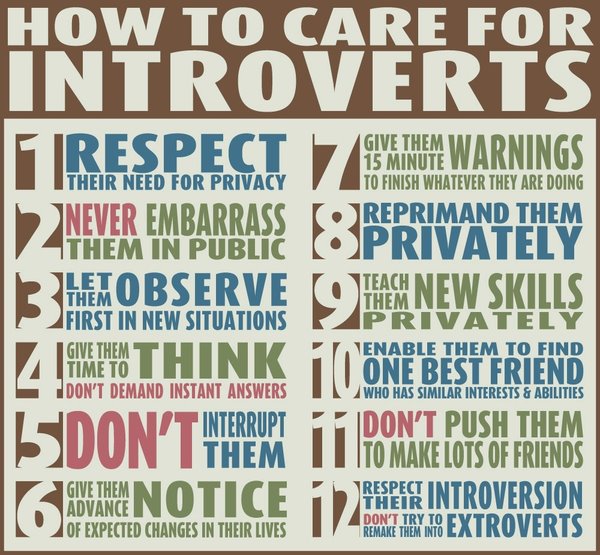
Remember, just like all the other stages of development, this ‘age of fear’ won’t last forever. Staying connected with your child and keeping the communication lines open through the ages and stages of development will help to ease their way as well as keeping your relationship strong and healthy.
Related posts:
Toddlers, Tantrums, and Time-Ins, Oh My!
Testing the Boundaries~What’s A Parent To Do?
To a Toddler Sharing is a 4 Letter Word~MINE!
Babes and Boundaries~A Gentle Parenting Perspective
Your Baby isn’t Trying to Annoy You; He’s Trying to Communicate!
 Award-winnning author, L.R.Knost, is the founder and director of the children's rights advocacy and family consulting group, Little Hearts/Gentle Parenting Resources, and Editor-in-Chief of Holistic Parenting Magazine. Books by L.R.Knost include Whispers Through Time: Communication Through the Ages and Stages of Childhood ; Two Thousand Kisses a Day: Gentle Parenting Through the Ages and Stages ; The Gentle Parent: Positive, Practical, Effective Discipline ; and Jesus, the Gentle Parent: Gentle Christian Parenting the first four books in the Little Hearts Handbook gentle parenting series, and children’s picture books Petey’s Listening Ears and the soon-to-be-released Grumpykins series.
Award-winnning author, L.R.Knost, is the founder and director of the children's rights advocacy and family consulting group, Little Hearts/Gentle Parenting Resources, and Editor-in-Chief of Holistic Parenting Magazine. Books by L.R.Knost include Whispers Through Time: Communication Through the Ages and Stages of Childhood ; Two Thousand Kisses a Day: Gentle Parenting Through the Ages and Stages ; The Gentle Parent: Positive, Practical, Effective Discipline ; and Jesus, the Gentle Parent: Gentle Christian Parenting the first four books in the Little Hearts Handbook gentle parenting series, and children’s picture books Petey’s Listening Ears and the soon-to-be-released Grumpykins series.
Raising Super Readers~The MARVELous Power of Comic Books!
 Captain America made his comic book debut on this day in 1941. He embodied the American Dream, a nobody who became a somebody, an everyday, struggling, working class American who became a hero.
Captain America made his comic book debut on this day in 1941. He embodied the American Dream, a nobody who became a somebody, an everyday, struggling, working class American who became a hero.
For Captain America, the dream became a reality because of a diabolical villain trying to take over the world and a risky scientific experiment to create a hero who could stop him. (Seriously, though, who would really let strangers stick them in a radiation chamber and inject green slime into their body?!?)
For children who feel like nobodies, though, who struggle everyday, who have to work harder in class than their peers, Captain America might just be the key to unlocking the power to read.
Children like My Renaissance Girl who struggle with severe dyslexia and/or other learning disabilities as well as children who don’t have learning disabilities but are reluctant readers [ImaginationSoup.net] often rely heavily upon illustrations to help them keep track of the storyline. This provides them with the motivation to continue to read, which in turn increases their ability to read, thus increasing their motivation to read…success leading to success…a virtuous circle!
However a problem arises because, while high quality, beautifully illustrated children’s picture books abound, books appropriate for and of interest to older children often are either sparsely illustrated or not illustrated at all.
Enter the comic book!
Comic books, now generally known as graphic novels, have increasingly been finding their way into classrooms and school libraries as teachers search for tools to not only help their students learn how to read, but to tap into the vivid imagination that is the hallmark of childhood and turn their students onto a lifelong love of reading.
The Graphic Classroom founder, Chris Wilson, has made it his mission to seek out excellent graphic novels covering a wide range of subjects and styles and get them into the public education system here in the U.S.
From Da Vinci: The Renaissance Man to The Action Bible, the graphic novel industry has come a long way from the days of Archie and Jughead. The venerable Stan Lee, himself a rags to riches story on the order of his Marvel character, Captain America, is credited with a large portion of the popularity of the ever more sophisticated world of the graphic novel. His relatable characters, real-world storylines, conversational style, and stunning graphic art have contributed immeasurably to the emergence of graphic novels from the dark ages of the dime store shelves to a powerhouse industry with much to offer the literary world.
When it comes to literacy, Stan Lee brought his own superpowers into play with the formation of the Stan Lee Foundation “to do whatever I could to fight illiteracy in children. Any child who grows up illiterate, unable to read and write — or even semi-literate — can be considered handicapped. Competition throughout the world has grown so keen that every young person needs every possible advantage to even the competitive playing field. The ability to read well, to study, comprehend, and process information is absolutely vital for success as an adult.”
Utilizing graphics in teaching reading is certainly not a foreign concept. Picture books for younger children have been used for centuries to interest children in the written word. (Check out this incredibly cool Superhero ABC graphic art novel for early childhood education!) But incorporating art in the form of illustrations and graphics into curriculum for older students seems to be a relatively new and somewhat controversial concept as evidenced by the Common Core State Standards [Education Week] being adopted in all but three states so far which states “the text should be central, and surrounding materials should be included only when necessary, so as not to distract from the text itself.”
Clearly, the object of the Common Core State Standards is to focus on the mechanics of reading, in effect producing students able to read manuals and textbooks, but with no engagement of the heart, no delighting of the soul, no enrichment of the imagination. In short, the purpose seems to be to produce a generation of automatons who can pass a test on Da Vinci, but can’t think or create or imagine or invent like Da Vinci.
When you consider that “Reading correlates with almost every measurement of positive personal and social behavior surveyed, from scholarship and job success to voting and playing sports.” [BookReporter.com], it makes more sense to raise bookworms than to program robots.
Successful reading means far more than possessing the ability to read. Engaging the hearts of students moves reading success beyond a life skill and turns it into a life style. Children who love to read…READ. Adults who love to read…READ. And graphic novels are too powerful of a tool in our arsenal to be disregarded because of pride or prejudice.
~Excelsior
Related posts:
Children who love to read…READ! Engaging children’s hearts in the wonder of reading instead of just training their minds in its mechanics. Raising Bookworms
8 Reasons to Let Your Kids Read Comics. Imagination Soup
It’s time for a return to childhood, to simplicity, to running and climbing and laughing in the sunshine, to experiencing happiness instead of being trained for a lifetime of pursuing happiness…it’s time to let children be children again. A Return to Childhood
Think homeschooled children are unsocialized, over-controlled, locked-away-from-the-world misfits? Think again! My Renaissance Girl
Playground Confessions~Look Who’s Talking!
Alphabet Fun~Imagination From A to Z!
Live to Play~Play to Learn~Learn to Live!
 Award-winnning author, L.R.Knost, is the founder and director of the children's rights advocacy and family consulting group, Little Hearts/Gentle Parenting Resources, and Editor-in-Chief of Holistic Parenting Magazine. Books by L.R.Knost include Whispers Through Time: Communication Through the Ages and Stages of Childhood ; Two Thousand Kisses a Day: Gentle Parenting Through the Ages and Stages ; The Gentle Parent: Positive, Practical, Effective Discipline ; and Jesus, the Gentle Parent: Gentle Christian Parenting the first four books in the Little Hearts Handbook gentle parenting series, and children’s picture books Petey’s Listening Ears and the soon-to-be-released Grumpykins series.
Award-winnning author, L.R.Knost, is the founder and director of the children's rights advocacy and family consulting group, Little Hearts/Gentle Parenting Resources, and Editor-in-Chief of Holistic Parenting Magazine. Books by L.R.Knost include Whispers Through Time: Communication Through the Ages and Stages of Childhood ; Two Thousand Kisses a Day: Gentle Parenting Through the Ages and Stages ; The Gentle Parent: Positive, Practical, Effective Discipline ; and Jesus, the Gentle Parent: Gentle Christian Parenting the first four books in the Little Hearts Handbook gentle parenting series, and children’s picture books Petey’s Listening Ears and the soon-to-be-released Grumpykins series.

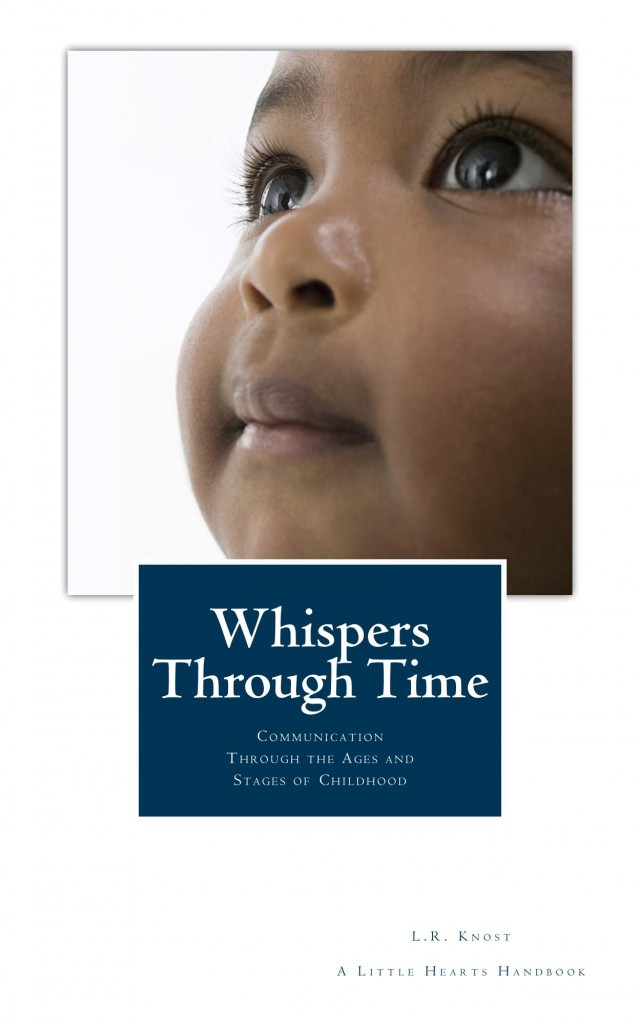
 [By L.R.Knost, author of
[By L.R.Knost, author of  [Reprinted from
[Reprinted from 

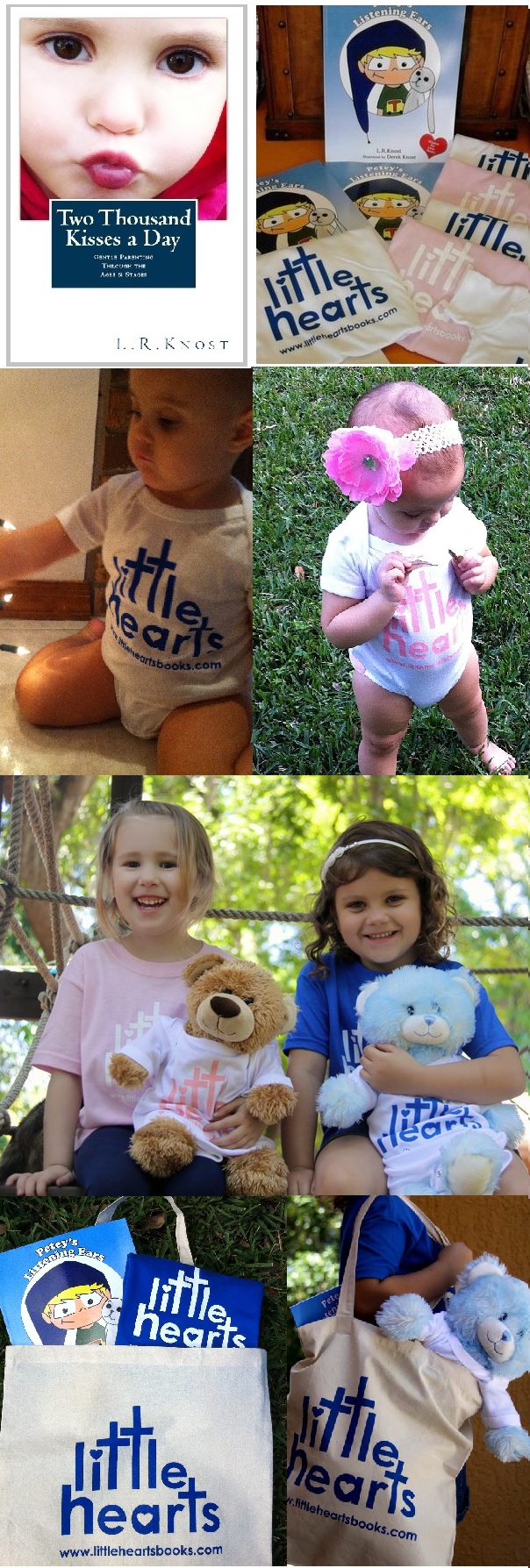
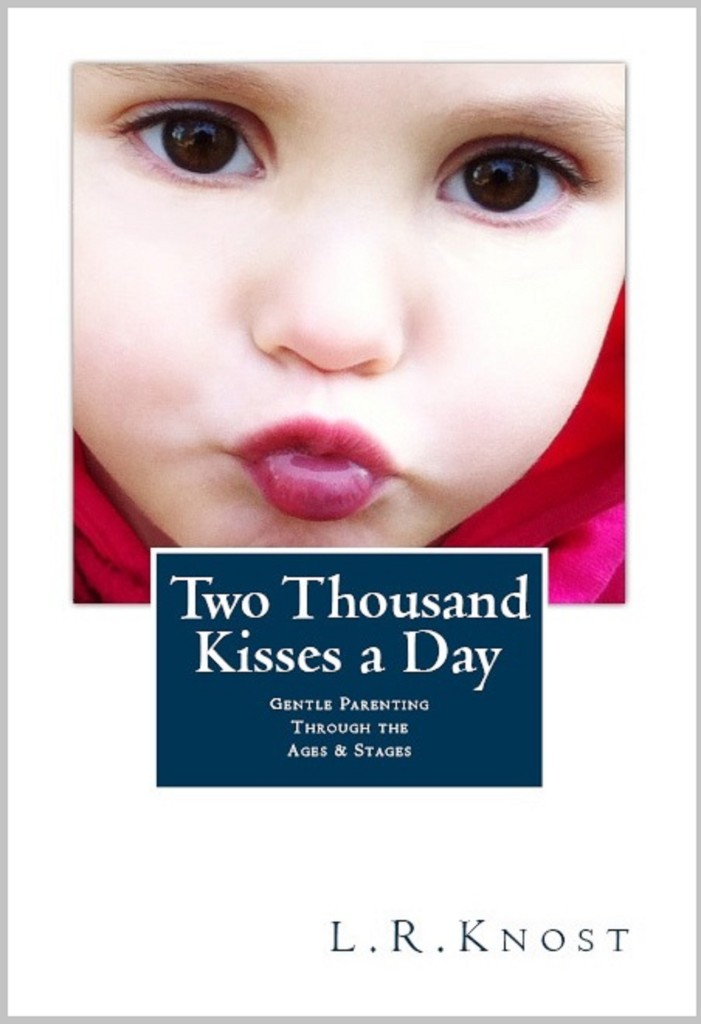
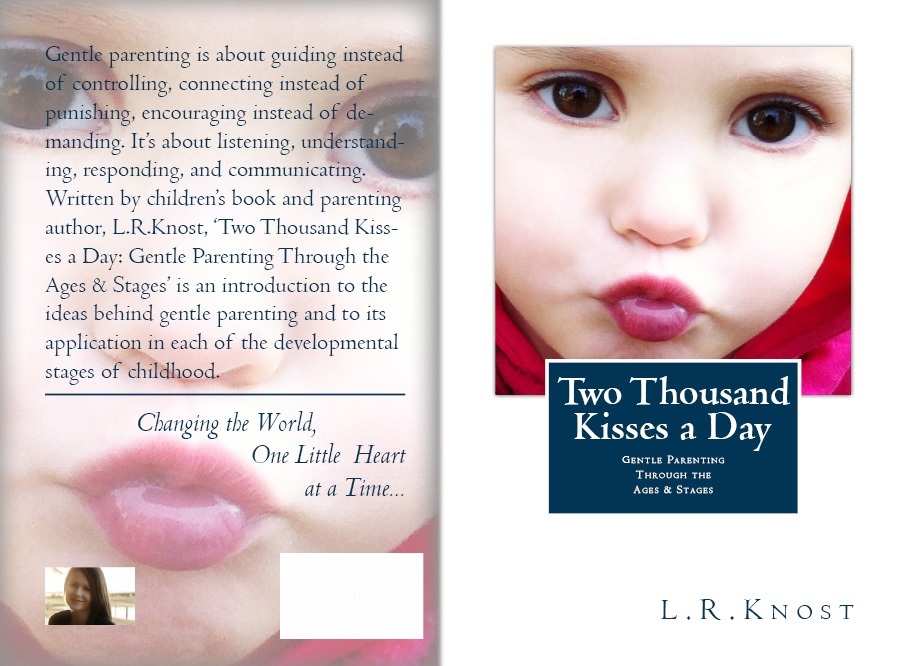

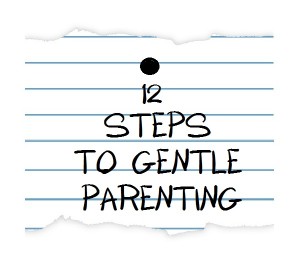 It’s been said that it takes twenty-one days to make or break a habit and that change comes easiest and lasts longest when it’s undertaken in small, bite-sized chunks. Those same principles apply when trying to transform your parenting, as well. Simply resolving on January 1st that, from that day forward, you are going to be a gentle parent and trying to change everything all at once is just setting yourself up for disappointment, frustration, and, more than likely, failure followed by that age-old enemy of peace…mommy guilt.
It’s been said that it takes twenty-one days to make or break a habit and that change comes easiest and lasts longest when it’s undertaken in small, bite-sized chunks. Those same principles apply when trying to transform your parenting, as well. Simply resolving on January 1st that, from that day forward, you are going to be a gentle parent and trying to change everything all at once is just setting yourself up for disappointment, frustration, and, more than likely, failure followed by that age-old enemy of peace…mommy guilt.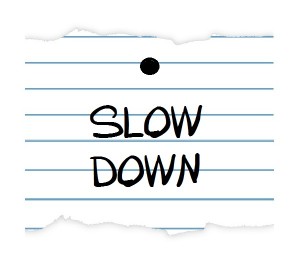





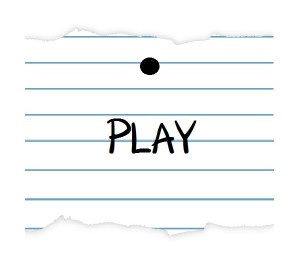





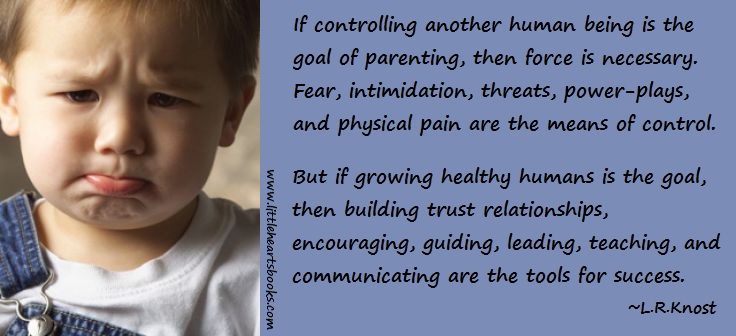







 There is such a rush these days to get children sleeping through the night, weaned off the breast, eating solid foods, potty trained, reading independently, and on and on, that we seem to have lost the ability to simply enjoy life as it happens and let our children do the same. Gone are the days of making mud-pies and playing in piles of leaves. They’ve been replaced with flashcards, language immersion (even in the womb!), educational dvd’s, and the like. Preschool has become the new kindergarten, with parents rushing to get on waiting lists for the ‘best of the best’ preschools, often even before their first prenatal appointment!
There is such a rush these days to get children sleeping through the night, weaned off the breast, eating solid foods, potty trained, reading independently, and on and on, that we seem to have lost the ability to simply enjoy life as it happens and let our children do the same. Gone are the days of making mud-pies and playing in piles of leaves. They’ve been replaced with flashcards, language immersion (even in the womb!), educational dvd’s, and the like. Preschool has become the new kindergarten, with parents rushing to get on waiting lists for the ‘best of the best’ preschools, often even before their first prenatal appointment!